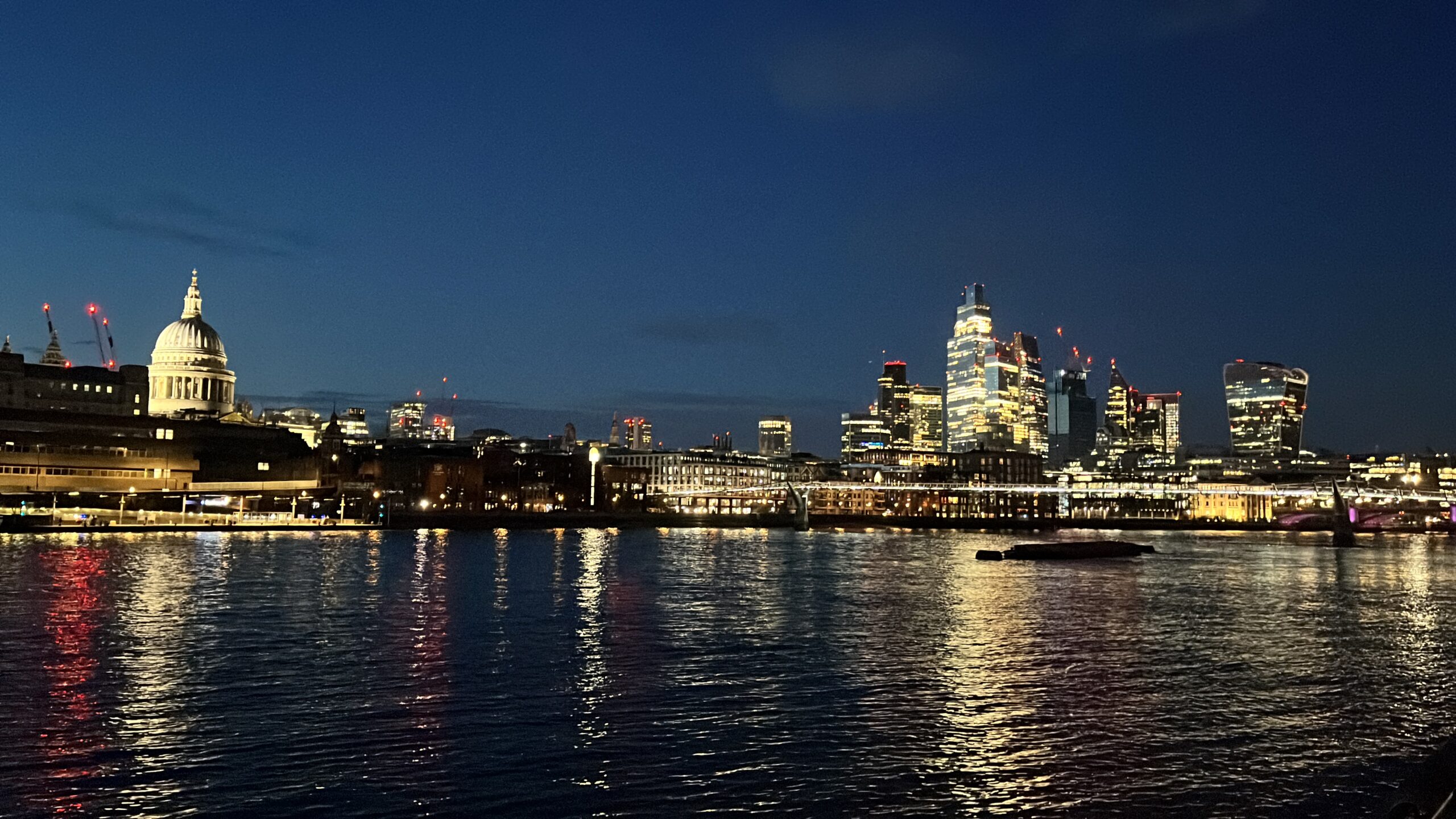
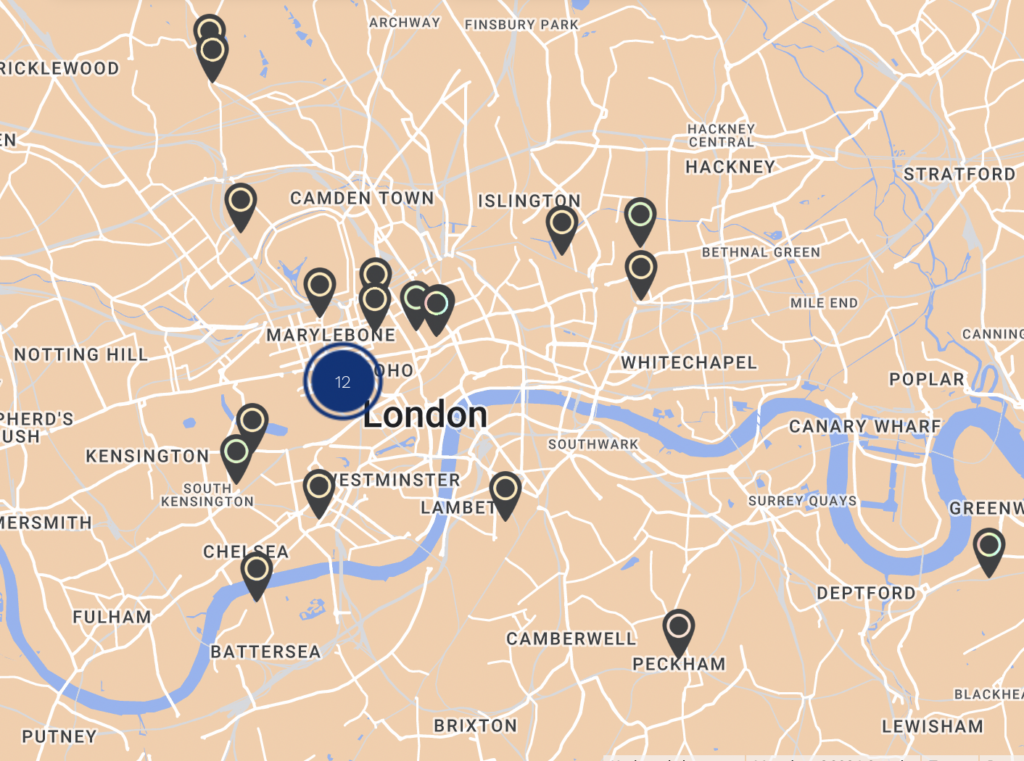
To see all the destinations listed in this guide and other ceramic sites in England, check out CERAMIC WORLD DESTINATIONS (CWD), MoCA/NY's interactive map listing over 4,000 ceramic destinations!
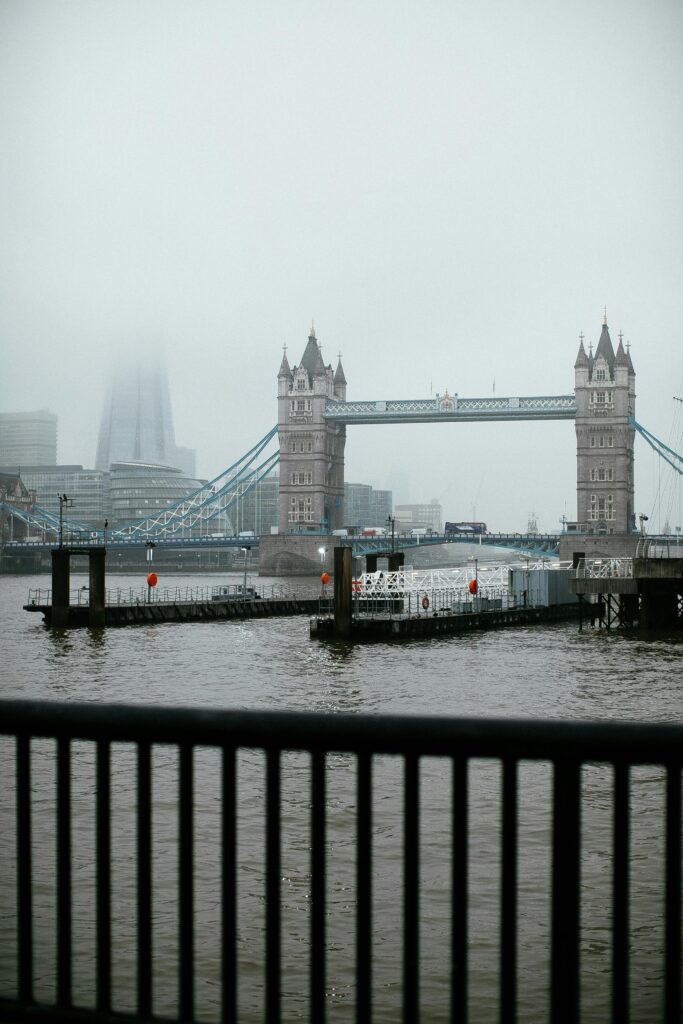
Londinium (Roman London) was born as a Roman settlement around 45 AD. Recent archaeological discoveries suggest even earlier Bronze Age settlements along the Thames, near the future site of the famed Doulton Pottery and today's Vauxhall Bridge. Since the city’s inception, clay has been intrinsic to the fabric of London. The Romans set up potteries in the nearby woods to craft domestic wares—bowls, beakers, and jugs. This legacy endures, with Roman kilns recently unearthed in Highgate Woods, a mere four miles north of the city.
In the bustling taverns of medieval London, clay was used as drinking vessels for mead and smoking pipes for tobacco. Even Shakespeare’s Globe Theatre, along with other playhouses in Southwark, relied on clay money boxes to collect entrance fees from patrons.
Fast forward to Edwardian and Victorian London, where ceramics became synonymous with the fine bone china of Josiah Wedgwood and Spode. Inspired by the fine porcelain arriving on the Royal East India Company’s fleet, they strove to emulate the fine porcelain from the Far East and manufactured their wares in the historic Stoke-on-Trent. Their creations, including the opulent 'frog service' of Catherine the Great, were sold to London’s high society from elegant showrooms, catering to the city's burgeoning merchant elite.
Historically, London relied on pottery to satisfy the new urban populace's needs for both functional containers and decorative items. To mitigate the danger of conflagration, sites were established outside the City of London. Fulham Pottery in West London ceased production in the 19th century, but its bottle kiln still stands as a marker of its legacy. Similarly, Doulton Pottery in Lambeth emerged as a major manufacturer until the clean-air acts forced businesses to close, ending an era of appalling and dangerous levels of industrial pollution.
Today, London is home to major ceramics courses at Central Saint Martins College of Art and Morley College. The city is dotted with studios open for visits, such as The Kiln Rooms, Turning Earth, and Cockpit Studios. For a comprehensive list of makers, the Craft Potters Association (CPA) website offers extensive details and contact information for selected makers from London and across the country.
Culturally, London is renowned for its long-established museums, which trace their origins to the cabinets of curiosity assembled by wealthy collectors to astonish their peers. Over time, these private collections were gifted to the nation. Sir Hans Sloane’s extensive collection, for instance, laid the foundation for the British Museum. Another treasure trove for ceramics enthusiasts is the Victoria and Albert Museum (V&A). Established by Royal Charter in the 19th century, the V&A was part of an educational endeavor aimed to showcase the diverse artefacts produced by the peoples of the UK and the expanding British Empire from the 17th century onward.
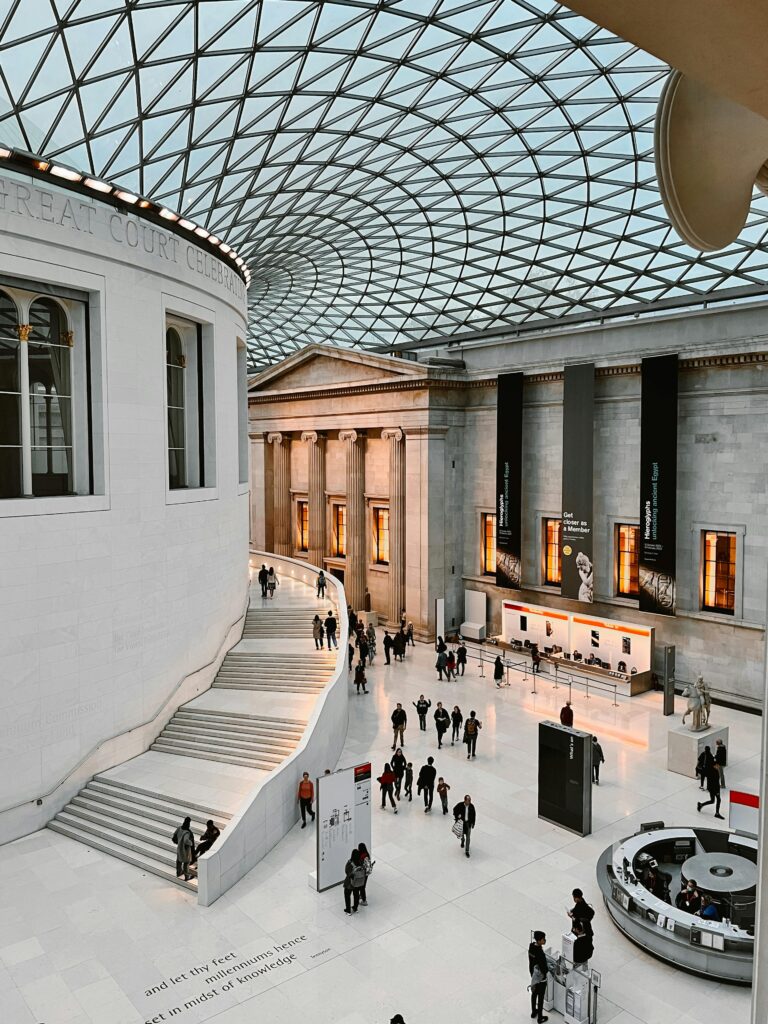
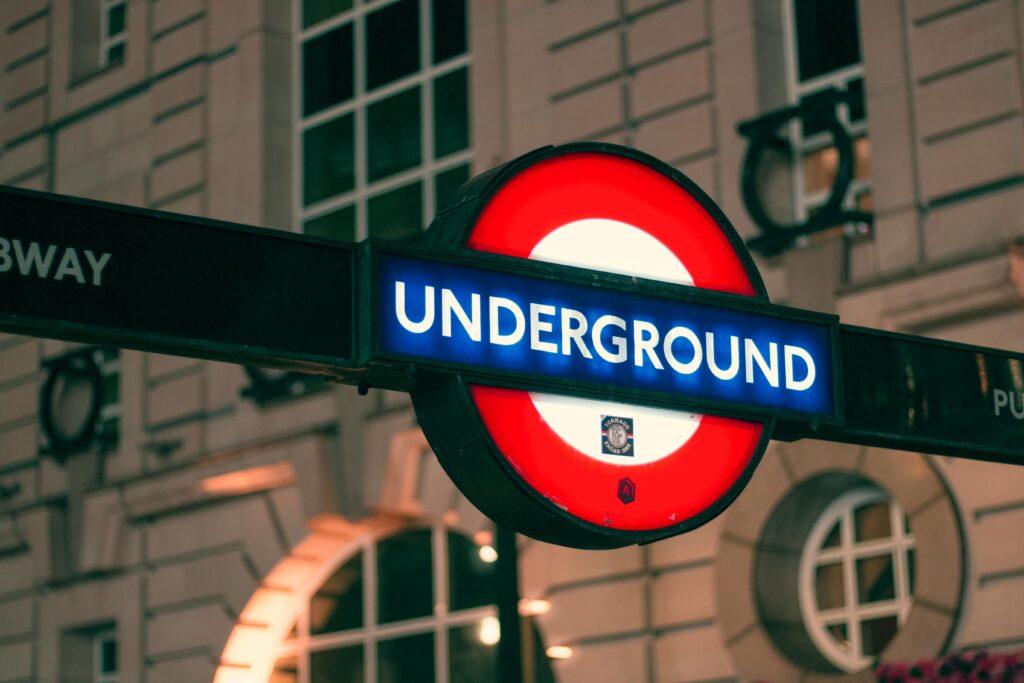
Despite its vast scale, London is best experienced on foot. Walking between certain locations is relatively easy, and the city's charm unfolds at street level. For a more immersive view, buses offer a look at the city's diverse neighborhoods. However, when speed is a priority, the metro system—known as ‘the tube’ or ‘the underground’—is ideal. London's underground network is one of the best-connected in the world, known for its intuitive and clear map design, making navigation a near-pleasure.
Transport for London (TFL) offers an excellent free app, that provides all possible routes and real-time updates.
The Tube has an extensive network of stations, many adorned with art, often crafted from ceramic tiles. Some essential detours on your Tube journey include:
Tottenham Court Road, where Eduardo Paolozzi’s extensive, vibrant, playful Pop Art mosaics delight the eye. Regent’s Park, showcasing Leslie Green’s rich and ornate green tiles, the first notable example of unified branding across the network. Don't miss walking through the exit tunnel. Finsbury Park, where Annabel Grey’s incredible mosaic celebrates the area’s location as a pleasure garden. Seven Sisters, featuring Matthew Raw’s modern exterior treatment with thousands of unique handmade tiles.
There are many other notable stations to discover across the network, each with its artistic charm.
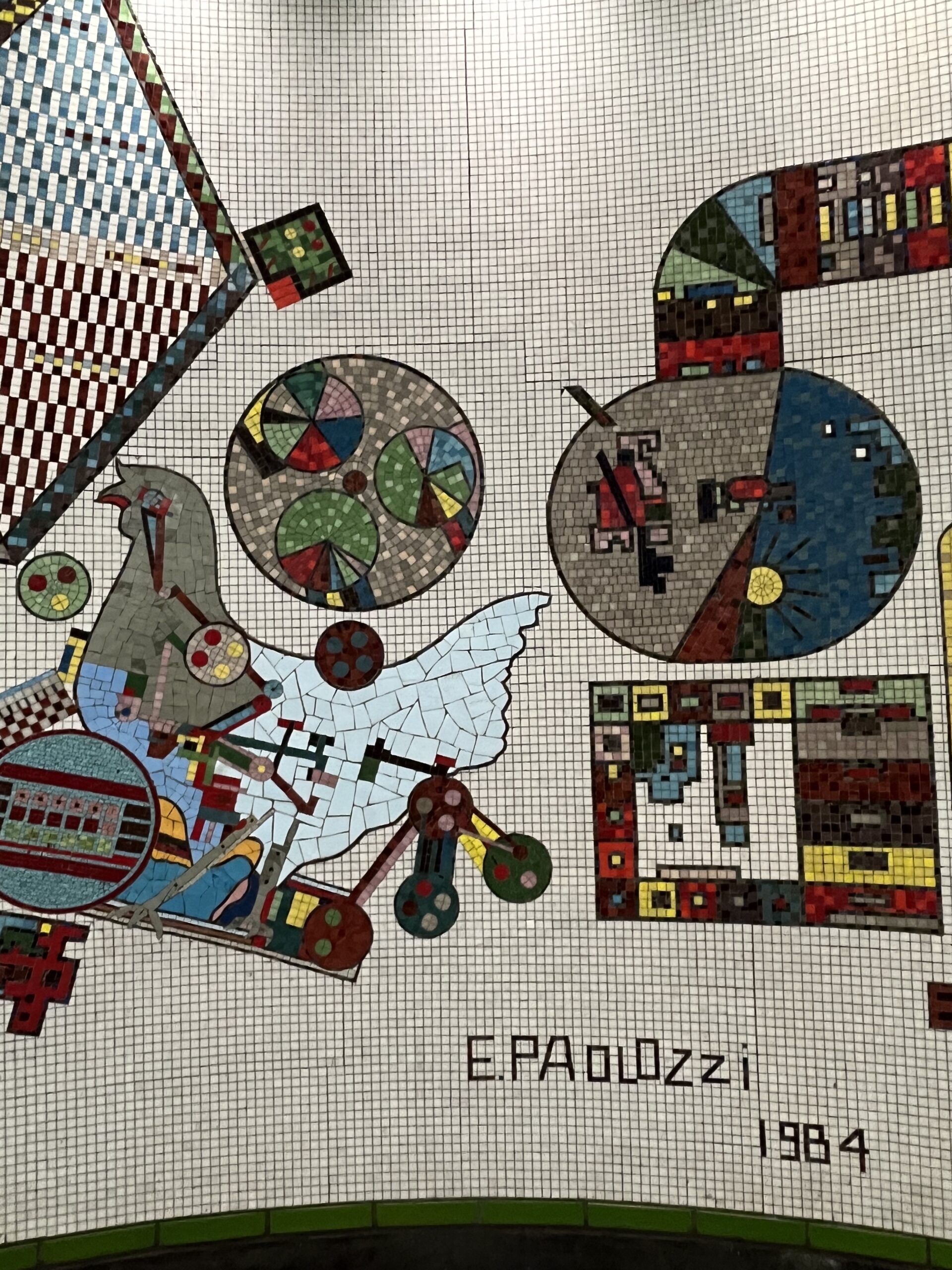
For accommodation in London, consider the Rembrandt Hotel, conveniently located across the street from the V&A Museum. Citizen M, situated on Southwark Street, is near the Tate Modern and Borough Market. The Zetter in Marylebone offers proximity to the Wallace Collection. For budget-friendly options, Pub Love Hostels across London provide good value, reviving the tradition of pubs offering rooms.
10 AM: British Museum
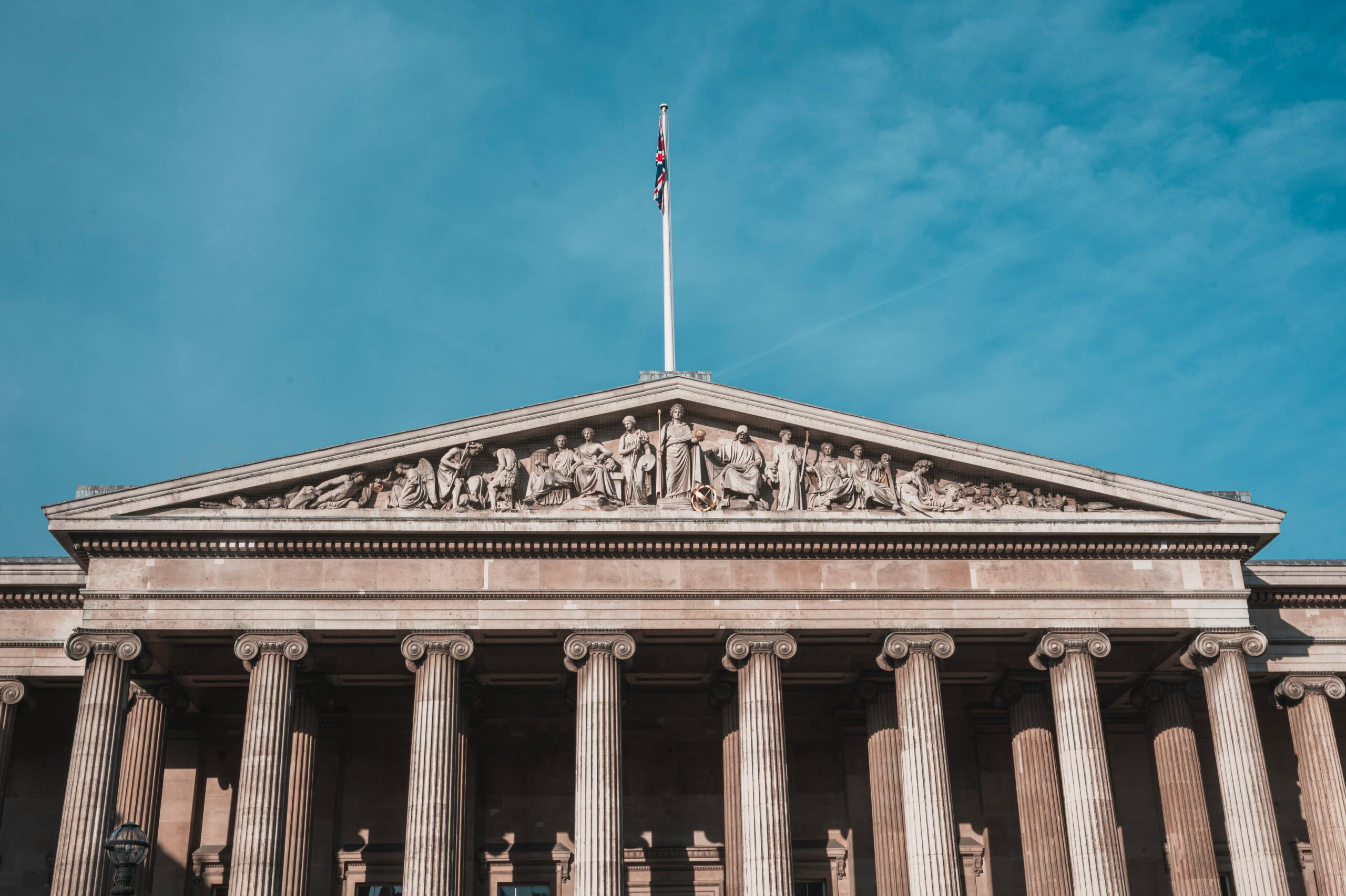
Head to the British Museum! Opposite the main entrance to the British Museum, the streets are lined with cafés and coffee shops—perfect for a cappuccino and croissant before joining the queue.
The British Museum, houses the planet's archaeological riches and has evolved from its origins in private collections and the spoils of empire to a narrative repository of the world’s history. It is also a focal point for debates on the restitution of artefacts. Because of its encyclopaedic approach, it can be tricky to navigate. However, do not be deterred as ceramic objects are important in every culture and as a result have prominence in most of the galleries in the museum.
The collection comprises many ceramic items, along with stone; fired clay is the most persistent material in museums. Ancient figurines from Turkey and Egypt—simply modeled female forms—are presumed to have held religious or magical significance, likely in childbirth. Some survive as fired fragments, possibly tossed into the fire as part of a ritual, incidentally transforming into ceramic and pots. Many have survived because they were buried with the dead. They contained food for the afterlife and speak to us still; resonant and empty like the skull that once contained the voice and thoughts of the deceased.
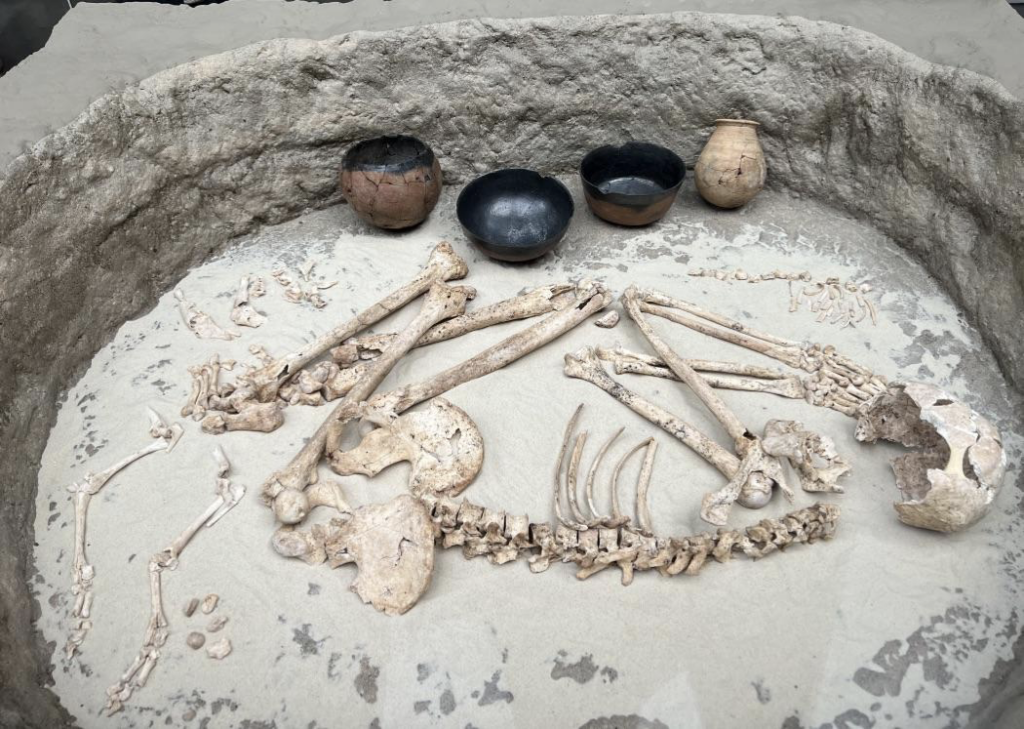
A must-see is the Sir Percival David Collection in Room 95, housing nearly 1,700 exquisite examples of Chinese decorative porcelain from the Song, Yuan, Ming, and Qing dynasties. The collection is considered to be in the 'Imperial’ or ‘Chinese taste,’ very much the high-water mark of Chinese porcelain, with many pieces originating from Jingdezhen.
Room 70 displays nearly 1000 years of Roman history including jewellery, glass, pottery, and one of the museum's most important objects: the Portland Vase. Though the vase is made of glass, it was meticulously copied over five years by Josiah Wedgwood in his famous Jasper body. These replicas were eventually sold through his London showroom to the capital's high society.
Room 46, Europe 1400-1800, charts a period of high ceramic production in Europe and features many Renaissance treasures, including the Medici Valencian Vase. Room 67 showcases exemplars of Korean art, with a particular emphasis on ceramics.
For many visitors, the highlight is the opportunity to unwind in the modernist conversion of the old courtyard space—the covered atrium designed by Norman Foster architects. Here, visitors can enjoy people-watching while sipping tea and reflecting on their heritage.
Before you leave the museum, make sure you visit the old British Library Reading Rooms in the Rotunda in the central courtyard. No visit to the museum would be complete without seeing the truly arresting Rosetta Stone in Room 4, a huge ancient stela containing a decree written in three languages Hieroglyphics, Demotic and Ancient Greek.
If you get hungry in the midst of art viewing, stop by the British Museum’s various food offerings: the Court Cafés, the Great Court Restaurant, the Pizzeria, and the Coffee Lounge.

1 PM: Contemporary Ceramics
Next, take a stroll across the road to Contemporary Ceramics - the gallery and shop for the Craft Potters’ Association. This space exhibits the work of its selected members; in contrast to the British Museum, the artists are all alive! There is a continually changing display of functional pots, figurative pieces, and sculptures (both as objects and vessels) as well as a rich turnaround of exhibitions by members. It stocks an extensive range of books on ceramics, and the shop manager, Marta Donaghey, is a fountain of knowledge on the contemporary ceramics scene. The building also houses the offices of Ceramic Review - the British Ceramics magazine that has been published for over half a century.

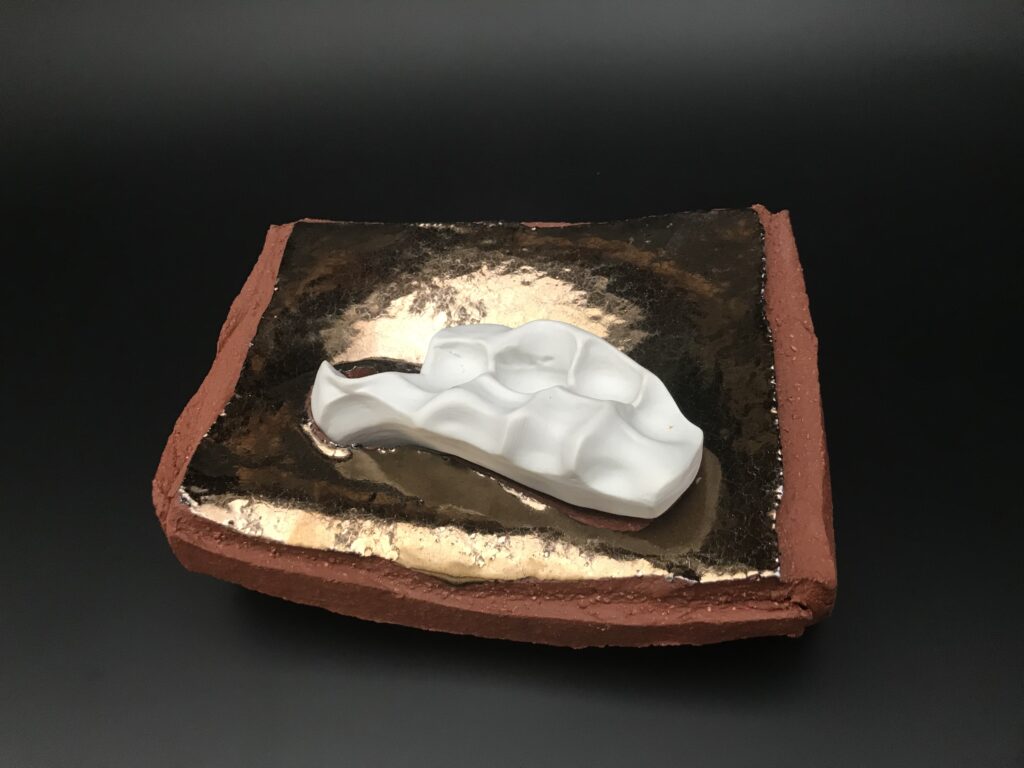
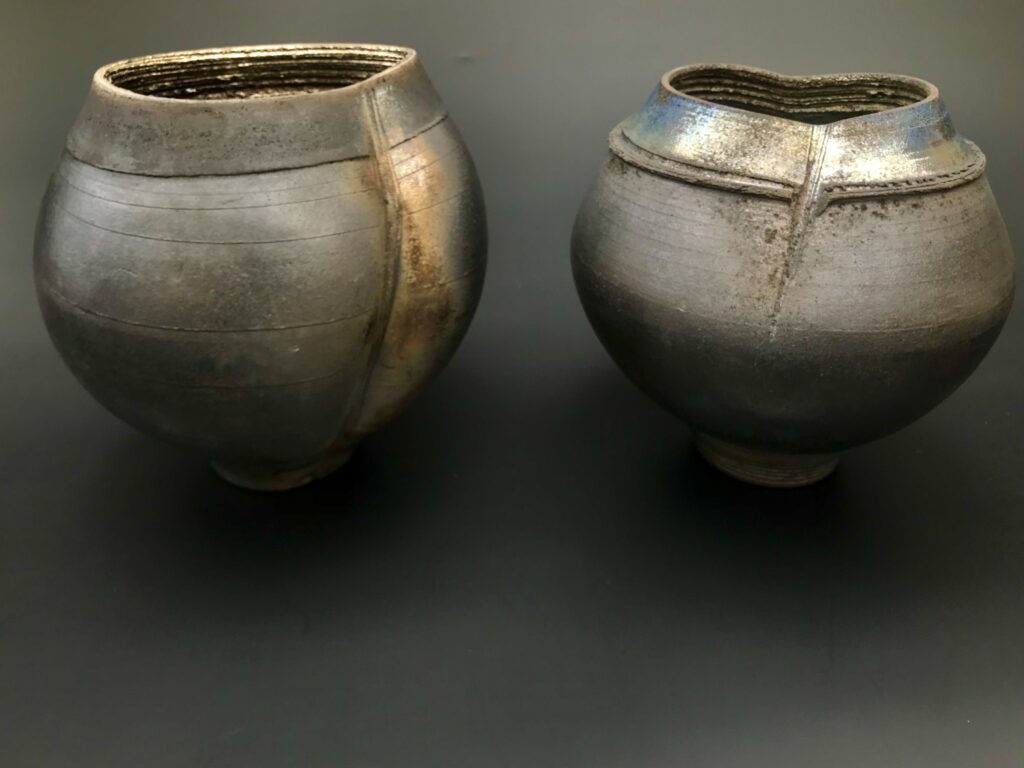
2 PM: London Review Cake Shop AND POSTMAN'S PARK
For a refreshing break from clay art, visit The London Review Cake Shop just around the corner. This excellent cafe offers fine teas, coffee, and cake, along with the opportunity to peruse some fine new books—perfect for escaping your ceramic overload.
A short walk from the Tottenham Court Road station will bring you to one of London’s hidden gems: Postman’s Park. Here lies George Frederic Watts' Memorial to Heroic Self-Sacrifice, honoring ordinary people who died saving others. The Victorian tiles tell heart-rending and poignant stories, inviting visitors to stop and reflect. It is one of London’s truly special places, well worth your time, and sure to leave you uplifted.
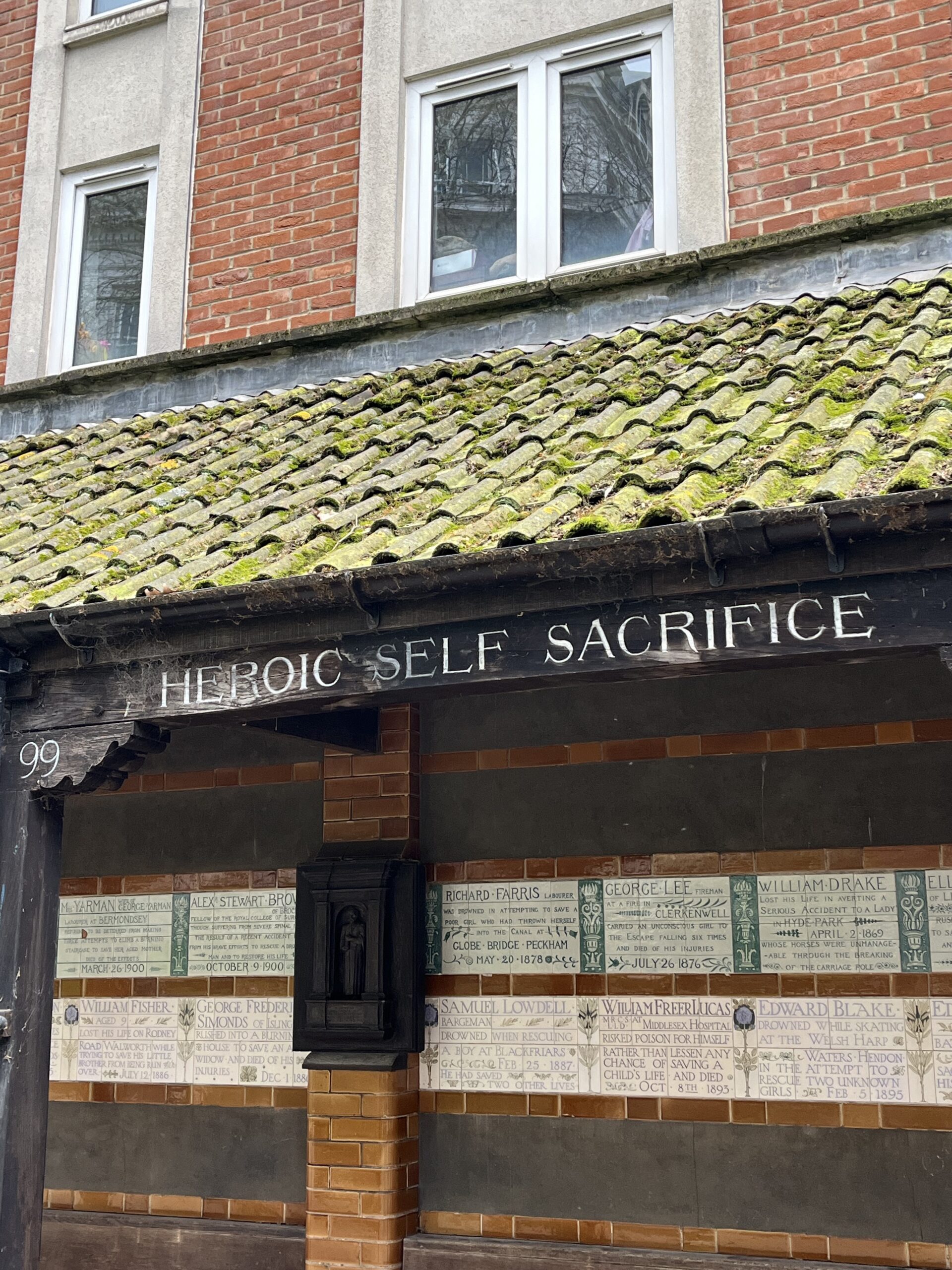
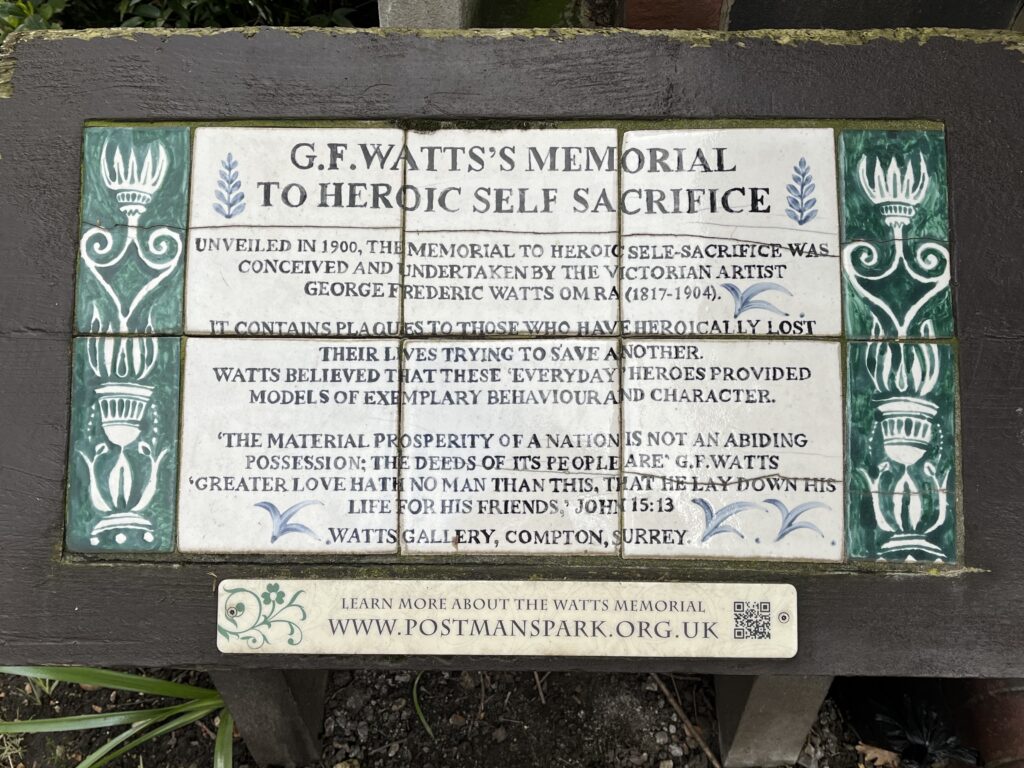
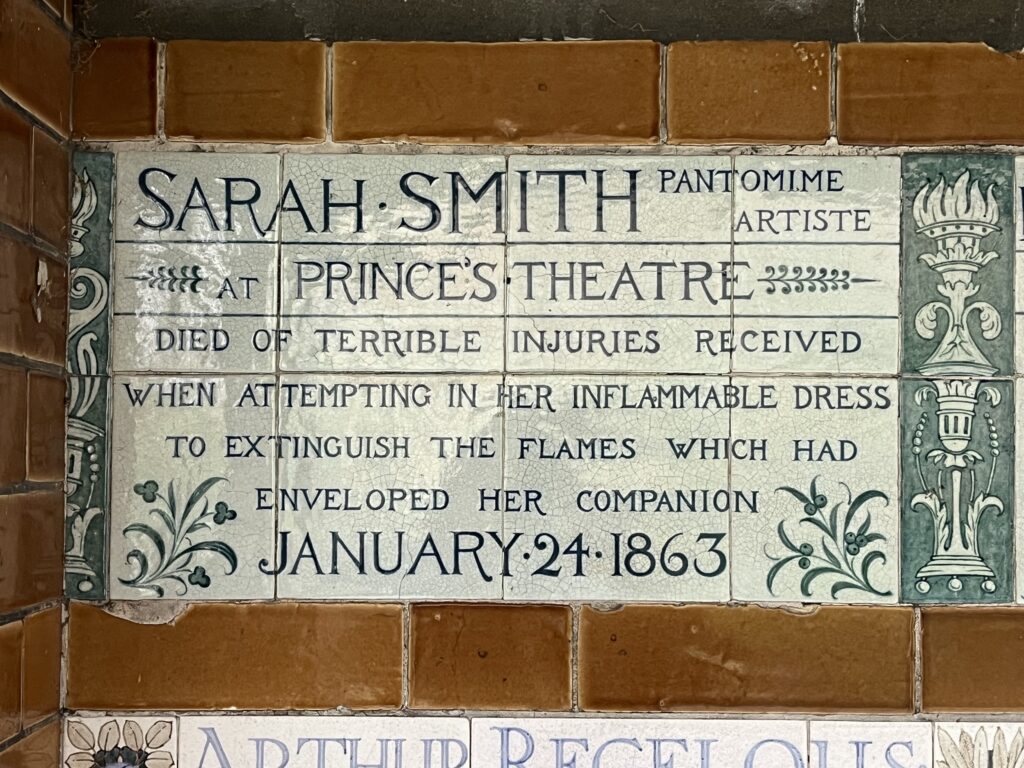
3 PM: THE MITHRAEUM
The Mithraeum, a short walk from Postman’s Park, is located in the basement of the ultra-modern Bloomberg Building, close to its original Roman site. These excavated remains of a Roman temple have been cleverly designed to stage the temple experience. An extensive exhibition of Roman artefacts found on-site is displayed at ground level. The reception area acts as a contemporary exhibition space where artists are invited to respond to the temple or its history. As you descend into the temple, an inscribed timeline on the wall depicts London's history by depth. It's very exciting!
4:30: Queenhithe Mosaic
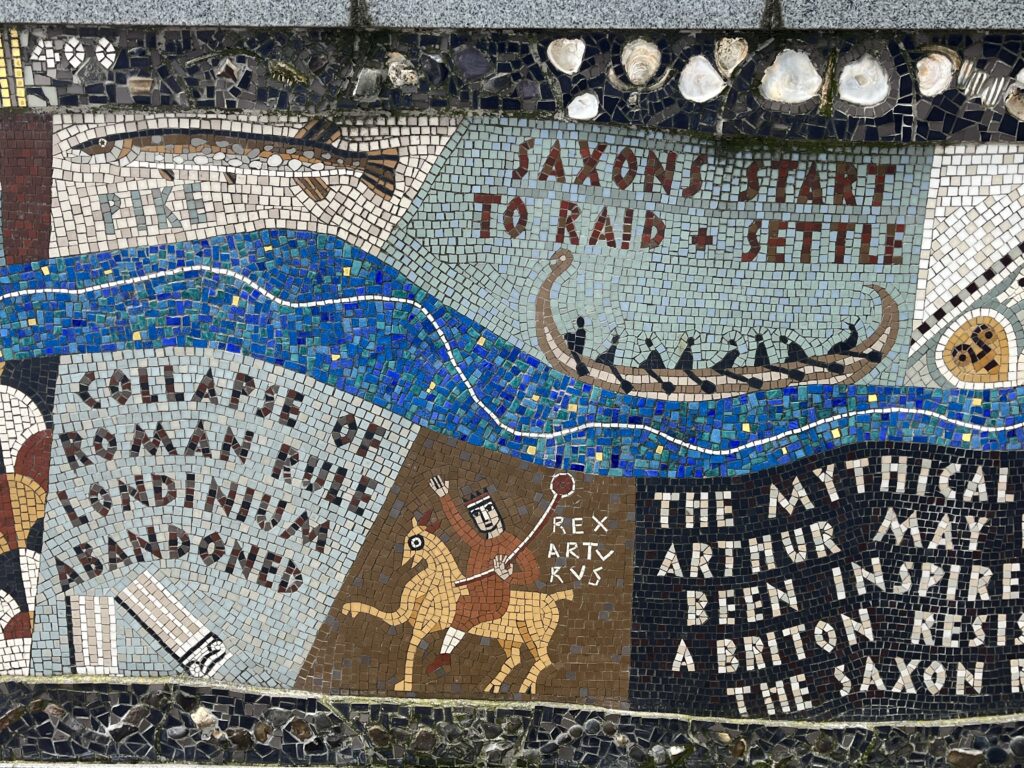
A five-minute walk will bring you to the River Thames at Queenhithe, home to the world's only existing Anglo-Saxon dock and the site of the best mosaic in London, the Queenhithe Mosaic. Designed by the London School of Mosaic and created with the help of over 300 volunteers, this mosaic beautifully depicts the history of London in intricate detail. Highlights include the arrival of Emperor Hadrian, the Bubonic Plague, and the Blitz during WWII.
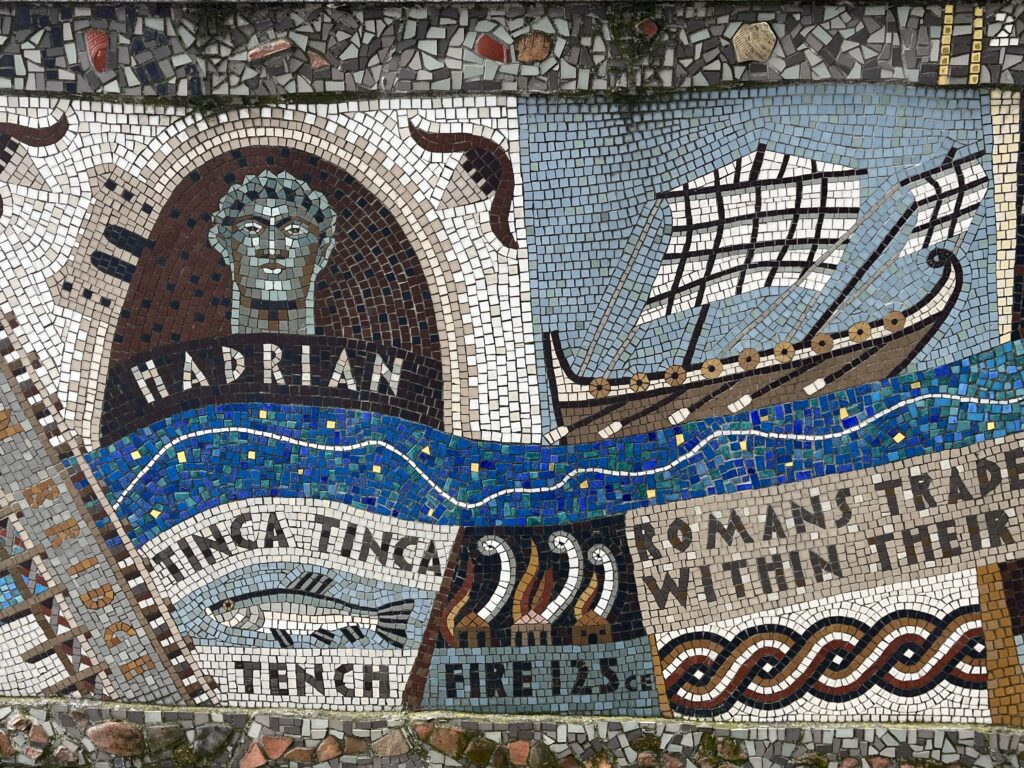
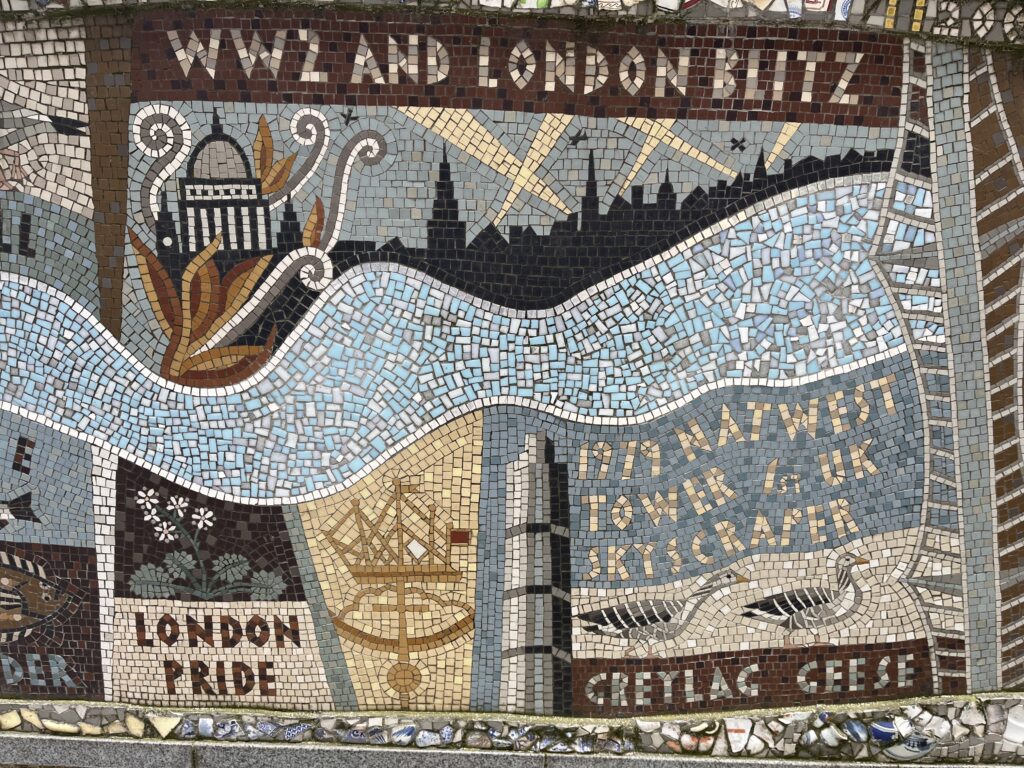
5 PM: Southwark Cathedral
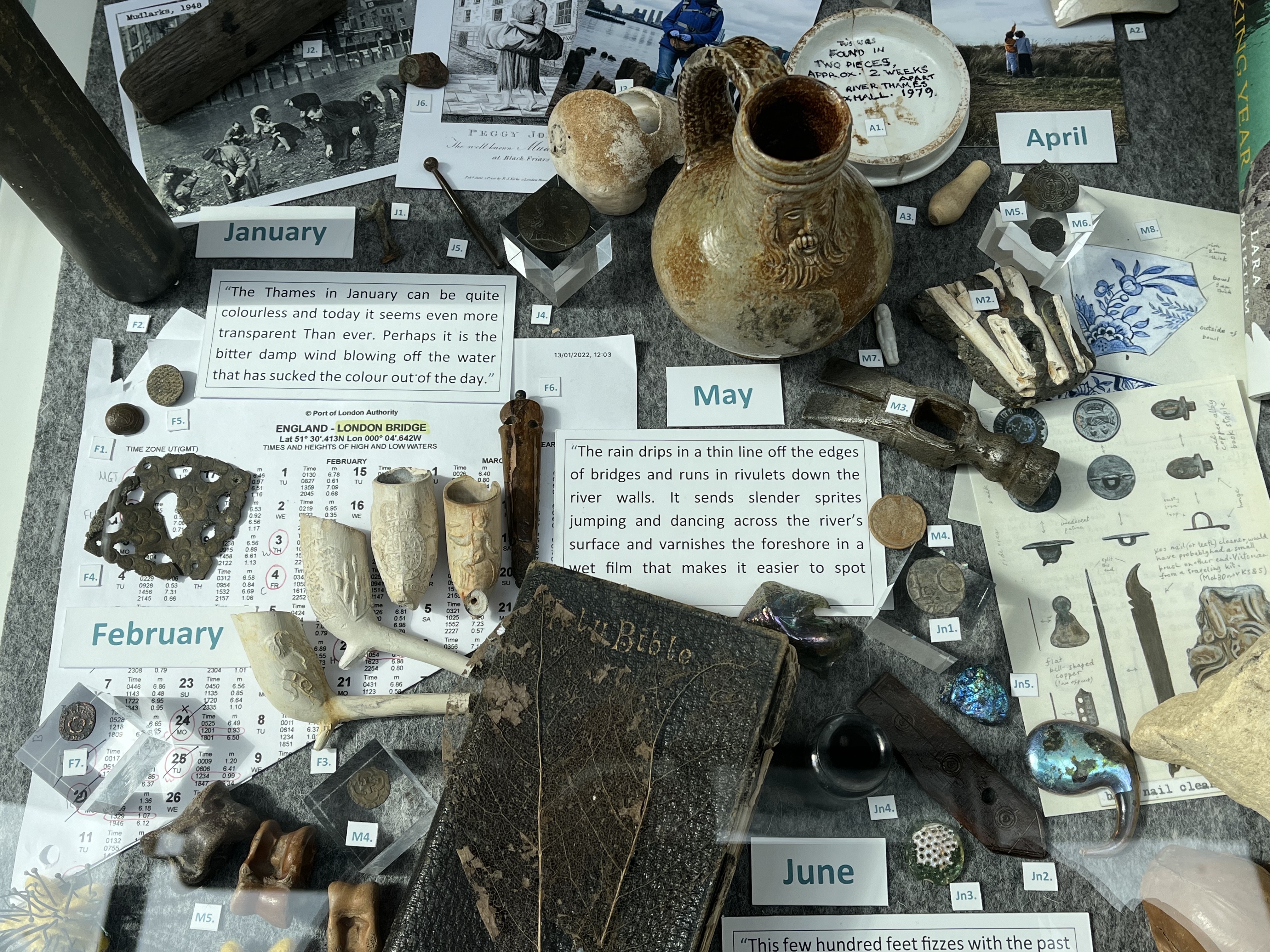
A short amble across either Southwark or London Bridge brings you to Southwark Cathedral, a beautiful historic site beside the river in the Borough. Inside, you'll find the remains of a 17th-century Delftware kiln. The area once hosted several potteries producing Delftware jugs, bowls, and flagons, the most famous being the Pickled Herring Pottery, about 500 meters upstream. The cathedral often features display cabinets with contemporary works by artists like Raewyn Harrison, exploring the history and the riverbank.
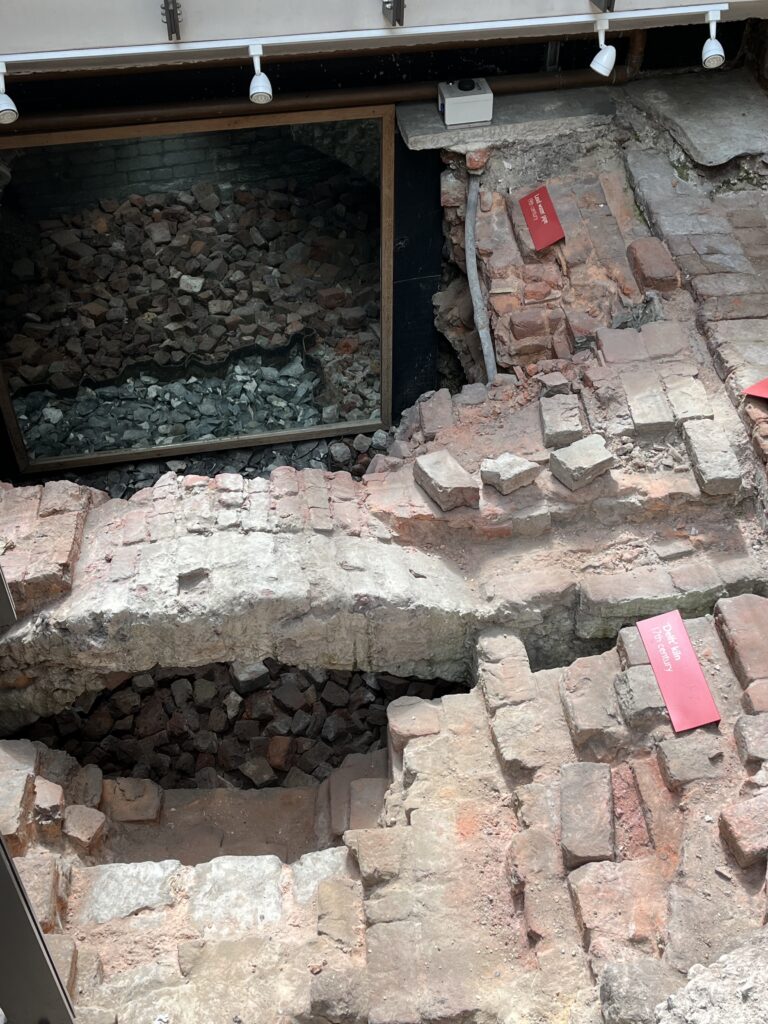
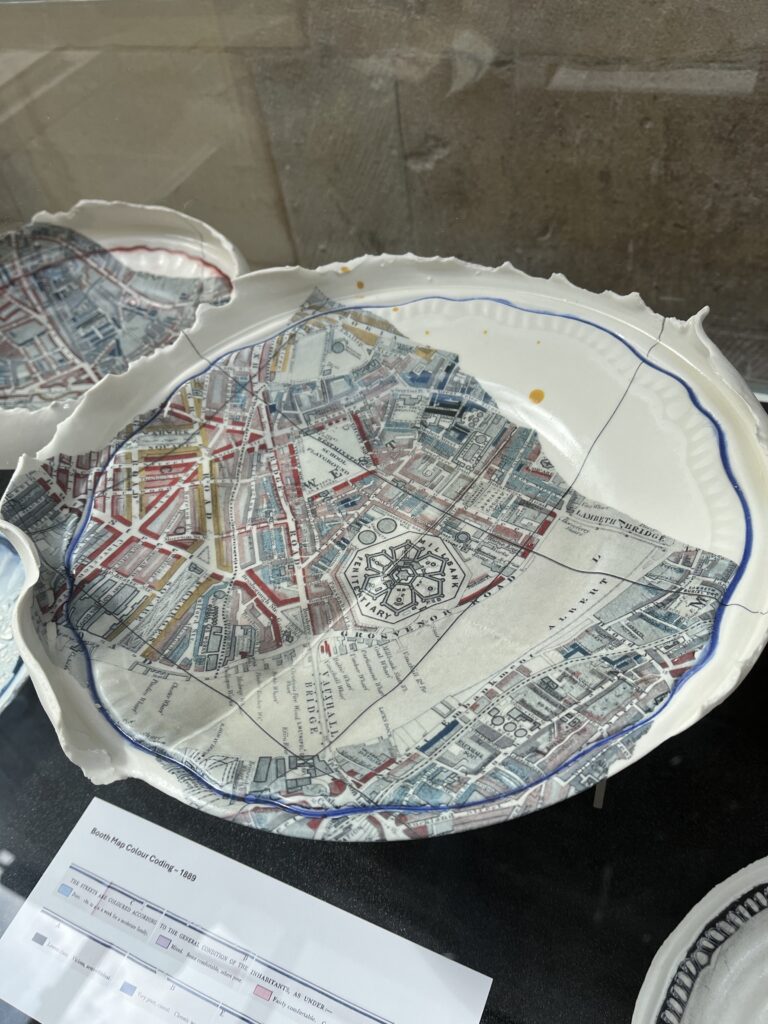
6 PM: BOROUGH MARKET
Borough, Bankside, or historically Southwark, was the traditional pleasure garden for the city of London on the opposite bank. It housed taverns, theaters like The Globe and The Rose, and even more nefarious entertainments such as bear baiting.
This is a fantastic area to spend your evening. Borough Market, a bustling produce market and
one of the most important "foodie destinations" in London, offers many dinner options. Highlights include Roast for traditional British fare and Fish! for fresh seafood. You can dine inside the restaurant or grab traditional fish and chips from their ‘chippy’ next door.
7 PM: Market Porter, George Inn, and Shakespeare's Globe
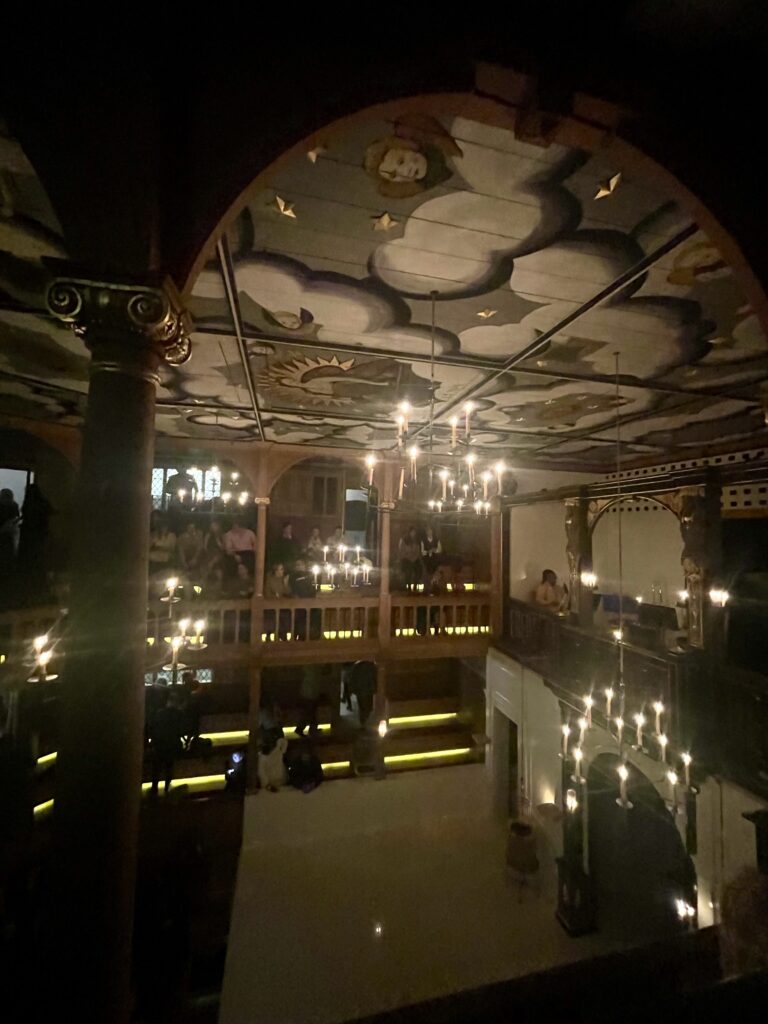
The Market Porter is the market pub to visit, where traders gather for a drink after their long night shifts at 6 AM. Just a few minutes across Borough High Street is the George Inn, the last remaining traditional galleried coaching inn in London, famously featured in Chaucer’s Canterbury Tales.
A great way to cap off the evening is to see a performance at Shakespeare’s Globe Theatre, just a five-minute walk from the market along the riverbank. Experience a Shakespeare play in this faithful reconstruction of the original Globe, with performances held in the open air. It is truly the best way to experience Shakespeare.
If you fancy a drink after the show, a short walk back across the river will bring you to The Blackfriar Pub, an Art Nouveau masterpiece adorned with mosaic, filigree, and wood paneling.
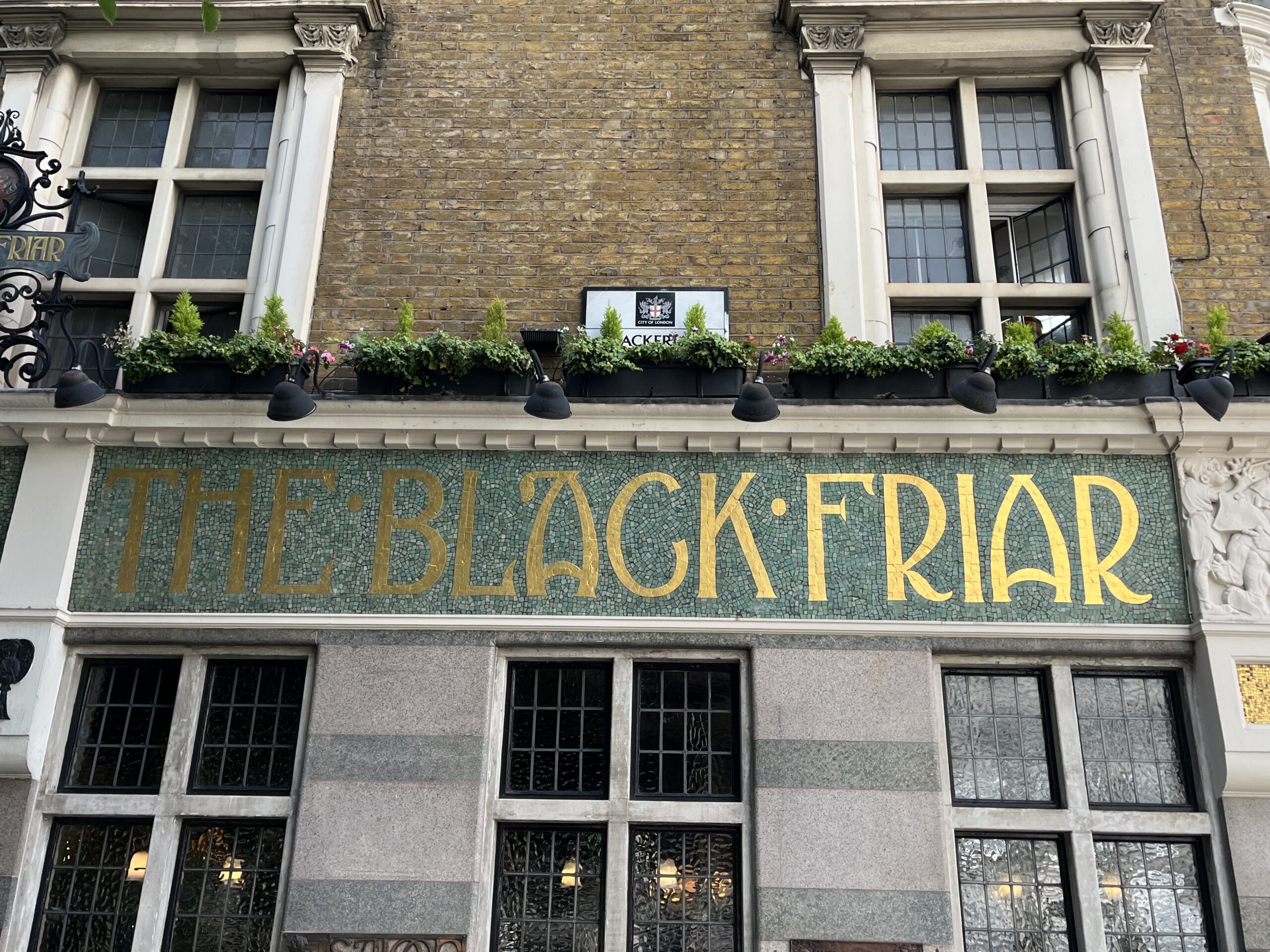
BOAT RIDE ON THE THAMES RIVER

An alternative to Shakespeare's Globe Theatre is exploring the River Thames, the UK’s most important waterway since the Middle Ages. London exists first and foremost because it controlled the access to the major trading route. The river encapsulates the city’s history, from nurturing maritime supremacy that fueled the British Empire’s expansion to today’s leisurely water-taxi rides unimpeded from traffic. Nighttime offers the best views, with London's illuminations mirrored on the water. Starting at Westminster Jetty, sail past the Houses of Parliament towards the Tate Gallery in the west.
Alternatively, head east and pass the Tate Modern, glide under the Millennium Bridge (designed by Norman Foster) linking Tate Modern to St. Paul’s Cathedral, and continue under Tower Bridge towards the Docklands and the new developments of Canary Wharf. Looking down at the muddy coastal margins, you can see fragments of water-worn brick and other remnants from the past; often, water-worn ceramic shards appear that, when cleaned of estuarine mud, tell a new story.
We should announce to all who have known the area in the past that that the museum sector in South Kensington has been cleaned! The scaffolding and the water cannons have finally been removed and, after some fine restoration, the renovated terracottas can be seen as they were designed to be viewed. These alone are worth a trip for anyone interested in architectural applications of clay.
10 AM: VICTORIA & ALBERT MUSEUM
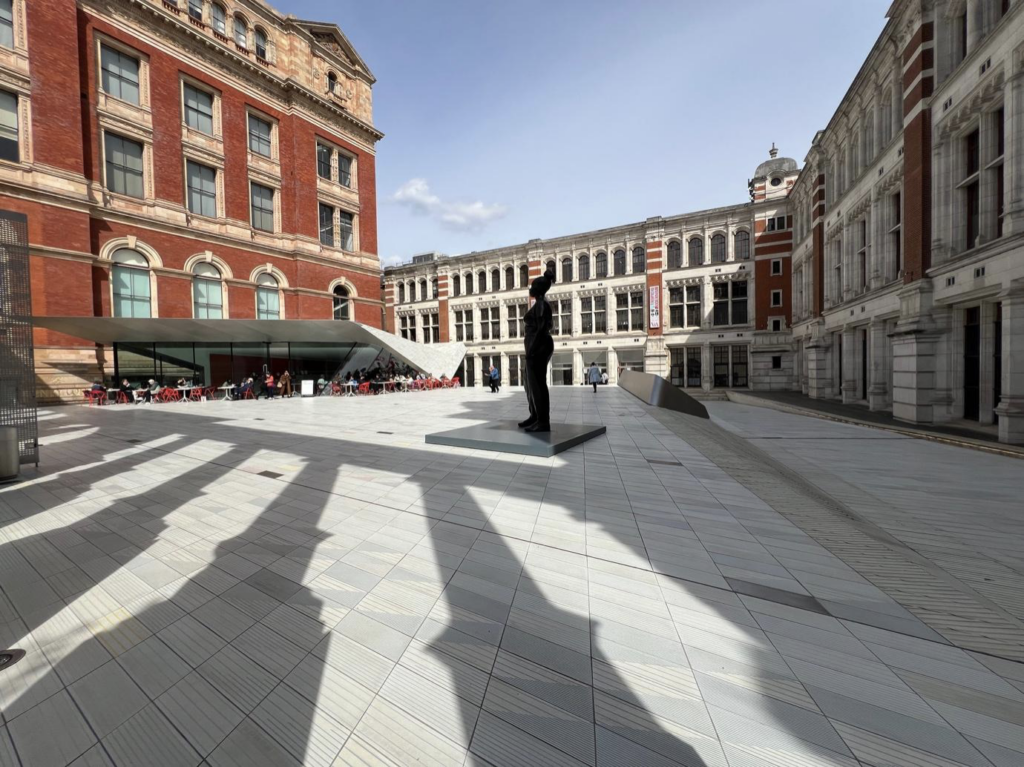
The Victoria & Albert Museum stands as one of the world's preeminent collections of decorative arts and crafts. You could spend days in this vast museum, wandering through its extensive permeant collections. But fear not, we’re here to guide you.
Start your visit with a coffee in the museum’s courtyard, a striking contemporary architectural marvel designed by Amanda Levete. Here, you'll be surrounded by handmade porcelain tiles from the Koninklijke Tichelaar Makkum ceramics factory in the Netherlands—a perfect blend of history and modern design.
Inside the V&A, the sheer number of exhibits can be overwhelming. Begin with a moment of contemplative silence upon entering the building. Before confronting the dramatic Dale Chihuly candelabra, look up to find Edmund de Waal’s Signs and Wonders hovering above you. This installation offers a thought-provoking reflection on the history of ceramics through a contemporary lens.
The best way to reach the ceramics collection is by taking the ceramics staircase, which, despite leading to the Whiteley Silver galleries due to a 1909 reorganization, remains the most rewarding route. Though not the quickest, this detour is one you shouldn't miss. The Ceramics Staircase is one of the museum's marvels, featuring three flights adorned with intricate moldings and hand-painted tiles known as ‘Della Robbia’ ware, produced by the English ceramic company Minton, Hollins & Co. Named after the renowned Florentine family of sculptors and ceramicists, these tiles add a touch of historic artistry. The staircase, designed by Francis Wollaston Moody and executed by his students from the adjoining National Art Training School (now the Royal College of Art), is a testament to the enduring legacy of ceramic craftsmanship.
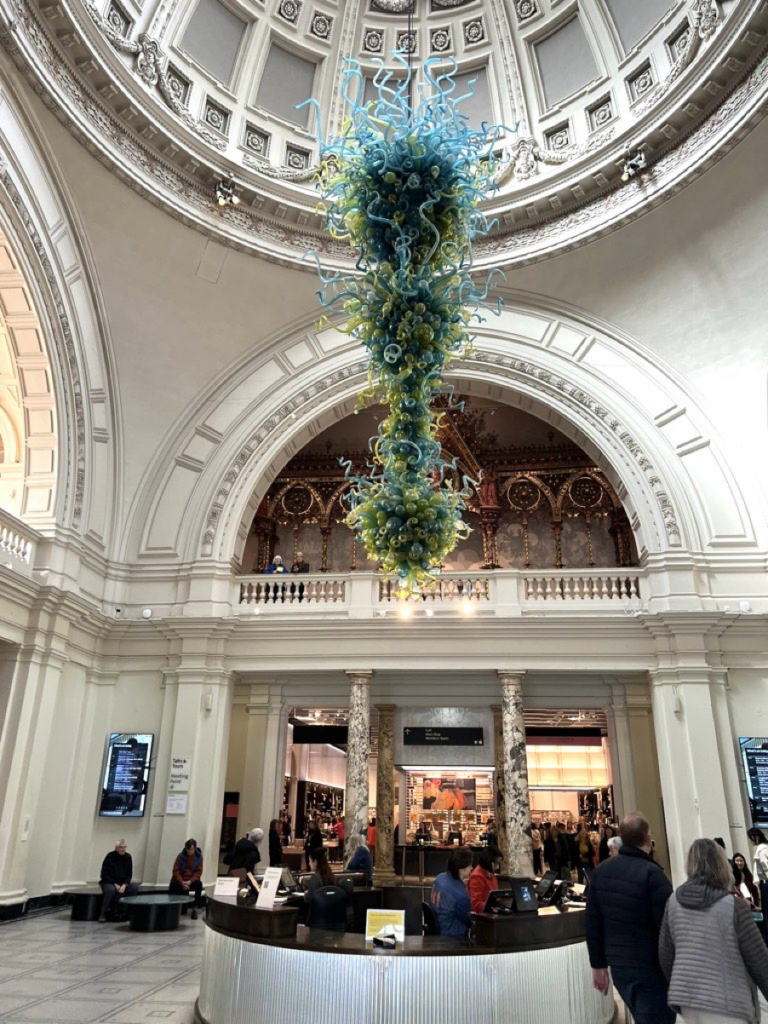
The Ceramic Staircase is a cacophony of imagery celebrating music, art, literature, and poetry. The ceiling above the first flight narrates The Pursuit of Art by Man, while higher up, the sciences come to life with portraits of Archimedes, Galileo, and Newton. The intricate details of this single staircase could easily occupy your entire morning. Once you finally reach the top, ask a gallery assistant to guide you to the Ceramic Galleries on the 4th floor.
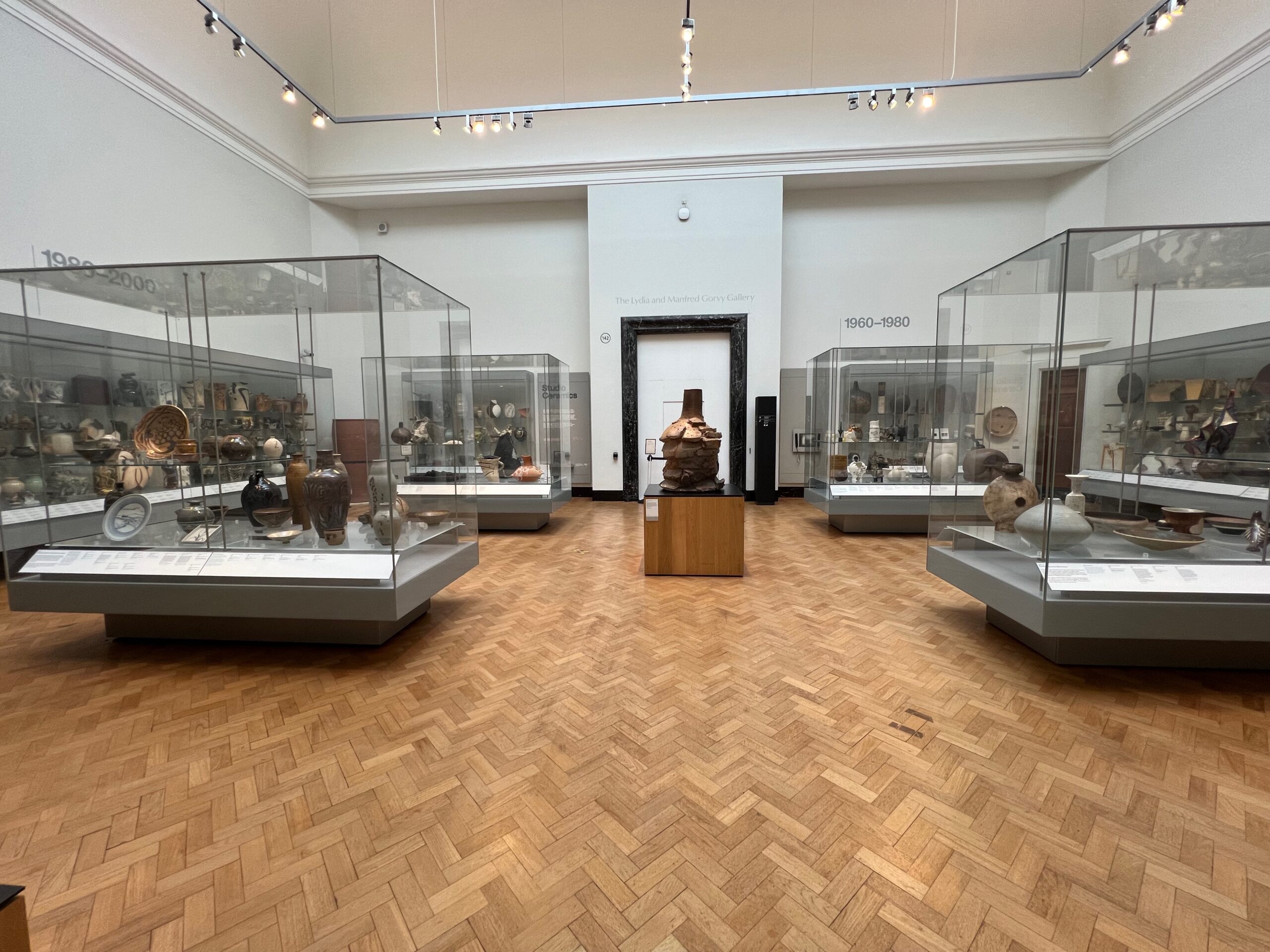
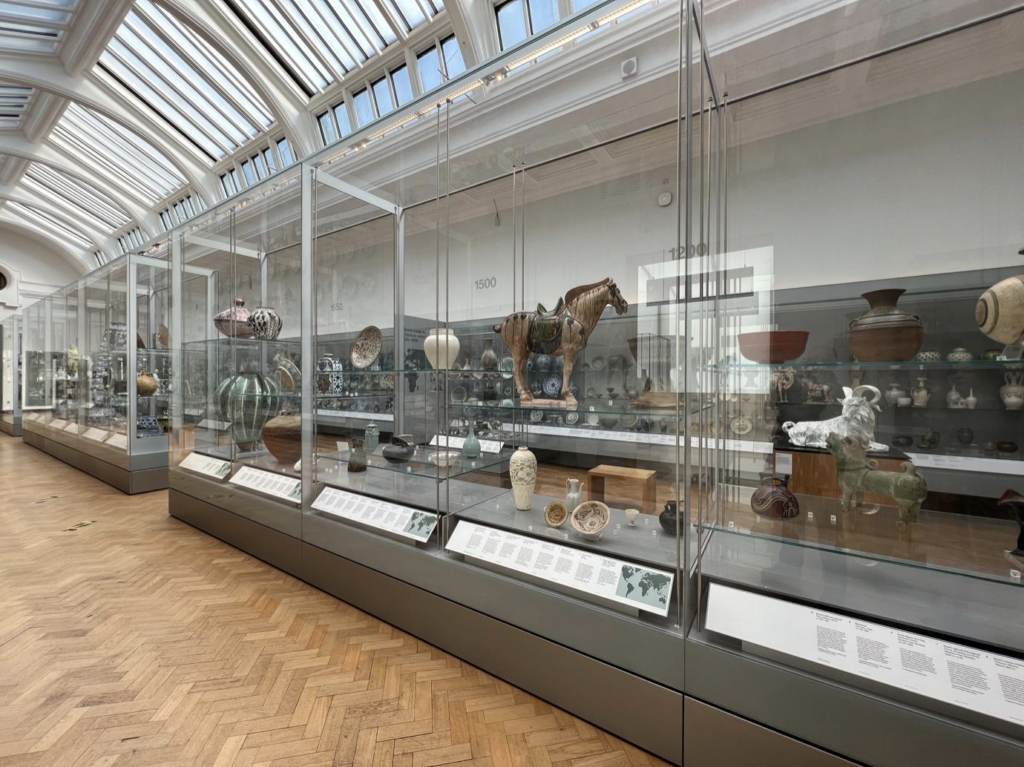
The Ceramic Galleries house over 26,000 objects, displayed in diverse ways to convey the vast collection. A 2010 reinstallation replaced Victorian vitrines with varied display methods to present a broad version of ceramic history, not from a linear or Western perspective, but by placing significant objects together to illuminate their interconnectedness.
Rooms 137-139 feature Italian Majolica, Chinese Porcelain, Dutch Delftware, English China, Meissen figurines, and faience in densely arranged glass cabinets. This intense display invites you to find connections and similarities, highlighting influences across cultures, continents, and centuries.
Room 140 celebrates factory ceramics, blending industrial production with arts and crafts. Room 141, the McAulay Gallery, offers a respite with a modern sculptural collection, including works by Martin Smith, Alison Britton, Nicholas Rena, Marek Cecula, and Clare Twomey. Here, you can pause and reflect, with a clearer, though still distant, view of Edmund De Waal’s Signs and Wonders installation above.
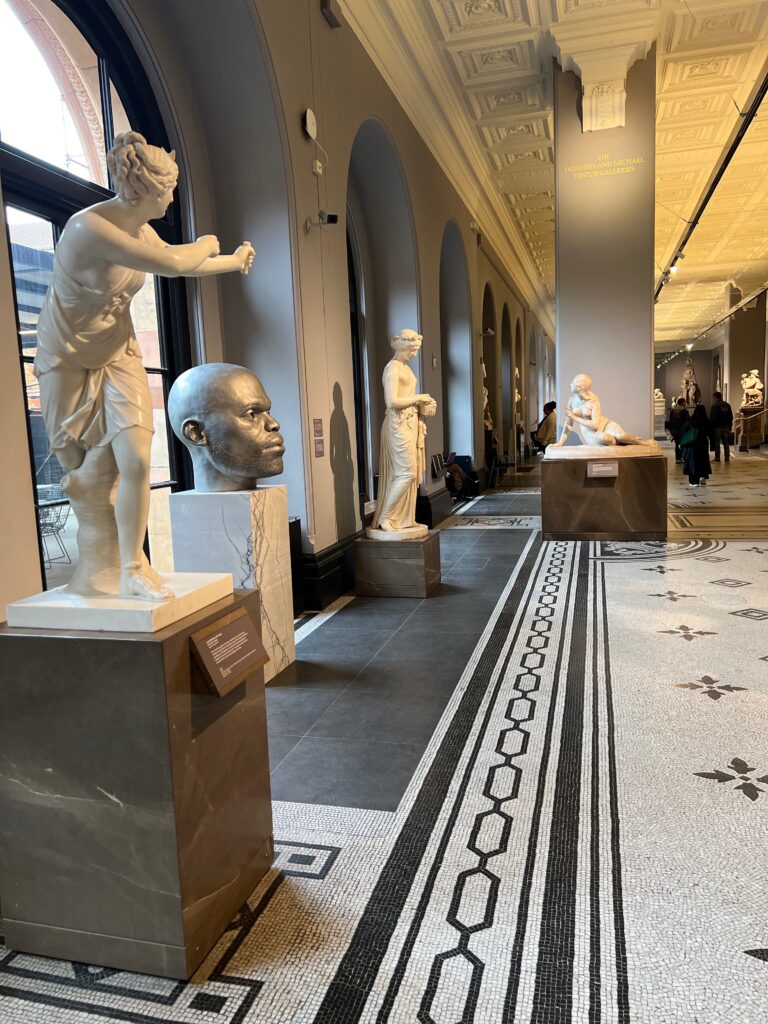
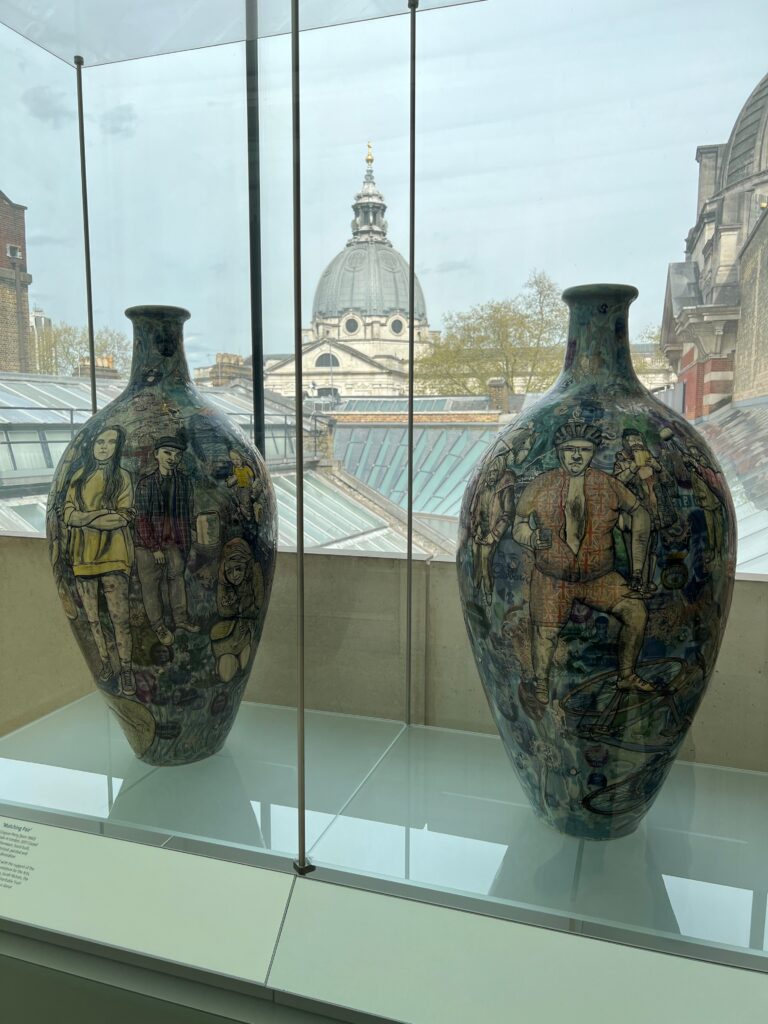
1 PM: LUNCH
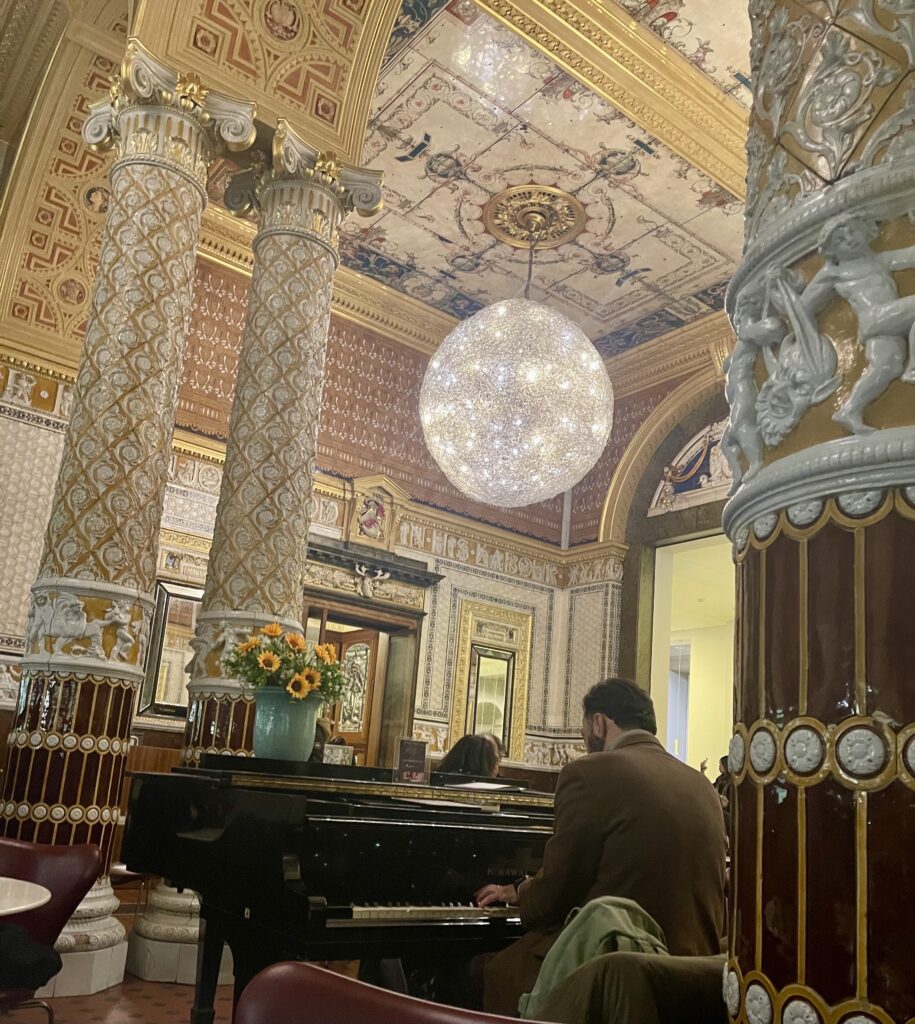
After an intense dive into the vast collections, a visit to the café is a must. The Gamble, Poynter, and Morris Rooms, re-opened at the turn of the millennium after being hidden for years, each offer a unique and grand style. The V&A claims these rooms as the world's first museum café. It's a perfect spot for a well-earned lunch, offering a range of options from light salads to hearty quiches and pies. The biggest dilemma is choosing which room to sit in. Tip: the Poynter Room is a standout, with Delft tiles painted by female students from a special porcelain class at the National Art Training School.
If you prefer dining elsewhere, consider visiting Harrods Food Hall on the ground floor of Harrods. This expansive, upscale emporium boasts a variety of food and drink shops, as well as fine dining restaurants, providing a luxurious culinary experience.
Alternatively, grab a simple sandwich or sausage roll from a nearby Pret-A-Manger or Greggs and enjoy lunch at Hyde Park
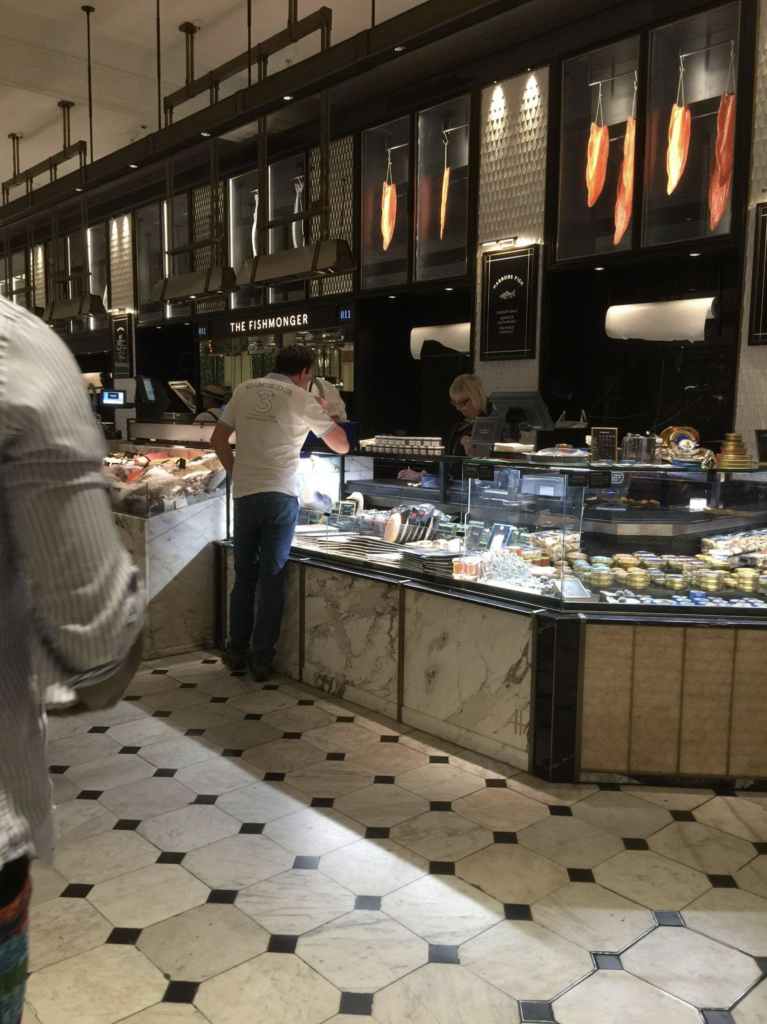
1:30 PM: The Wallace Collection

In addition to the major collections, each of which could occupy a week’s attention without exhausting their millions of artifacts, London boasts many smaller institutions. One such gem is the Wallace Collection. If 18th-century opulence is your passion, this museum will delight you. After a leisurely afternoon tea in the covered courtyard, immerse yourself in Fragonard paintings and Sèvres porcelains. The Wallace Collection also hosts special exhibitions, adding an ever-changing allure to its timeless splendor.
After such a surfeit of indulgence, a palate cleanser is in order. A brisk walk through the centre of town to enjoy Afternoon Tea at Fortnum & Mason can include visits to several galleries and points of interest.
3 PM: GALLERIES
Mint Gallery: a distinguished venue for contemporary design art, showcases an exquisite array of ceramics, glass, textiles, and furniture. It provides a premier platform where both emerging and established designers can present their work in concert, fostering a dynamic dialogue within the design community.
Stephen Friedman Gallery: the gallery has established itself as a premier contemporary art gallery representing exceptional artists from around the world. Since its inception, the gallery has been a staple in Mayfair, London.

Erskine, Hall & Coe: Established in 2011, this gallery specializes in contemporary and 20th-century ceramics, representing distinguished ceramicists such as Gordon Baldwin, Ruth Duckworth, Hans Coper, and Beate Kuhn. Visit their website to explore the current exhibition.
Messums: The gallery specializes in ceramics and the applied arts. The London gallery curates solo and group exhibitions around compelling themes, featuring prominent ceramicists such as Martin Smith, Christie Brown, William Cobbing, and Halima Cassell.
David Gill Gallery: Before stopping for Afternoon Tea, stroll a few streets beyond Fortnum & Mason to visit David Gill Gallery. This contemporary art space specializes in sculpture and design art, representing notable artists such as Barnaby Barford and Fredrikson Stallard, as well as recent Central Saint Martins graduate Lena Peters.
4:30 PM: AFTERNOON TEA
For the quintessential English fine dining experience then afternoon tea at Fortnum & Masons is a must. Cucumber sandwiches, Salmon and Victoria sponge all served on the finest English Fine Bone China and glass of Champagne to toast a hard day of ceramics.
Clay Architecture
While hopping from one gallery to the next, walk down Gilbert Street to view Clare Twomey’s Anatomy of Time, the largest ceramic façade by a female artist in Mayfair. This remarkable piece represents the indigenous plants of the subterranean River Tyburn.
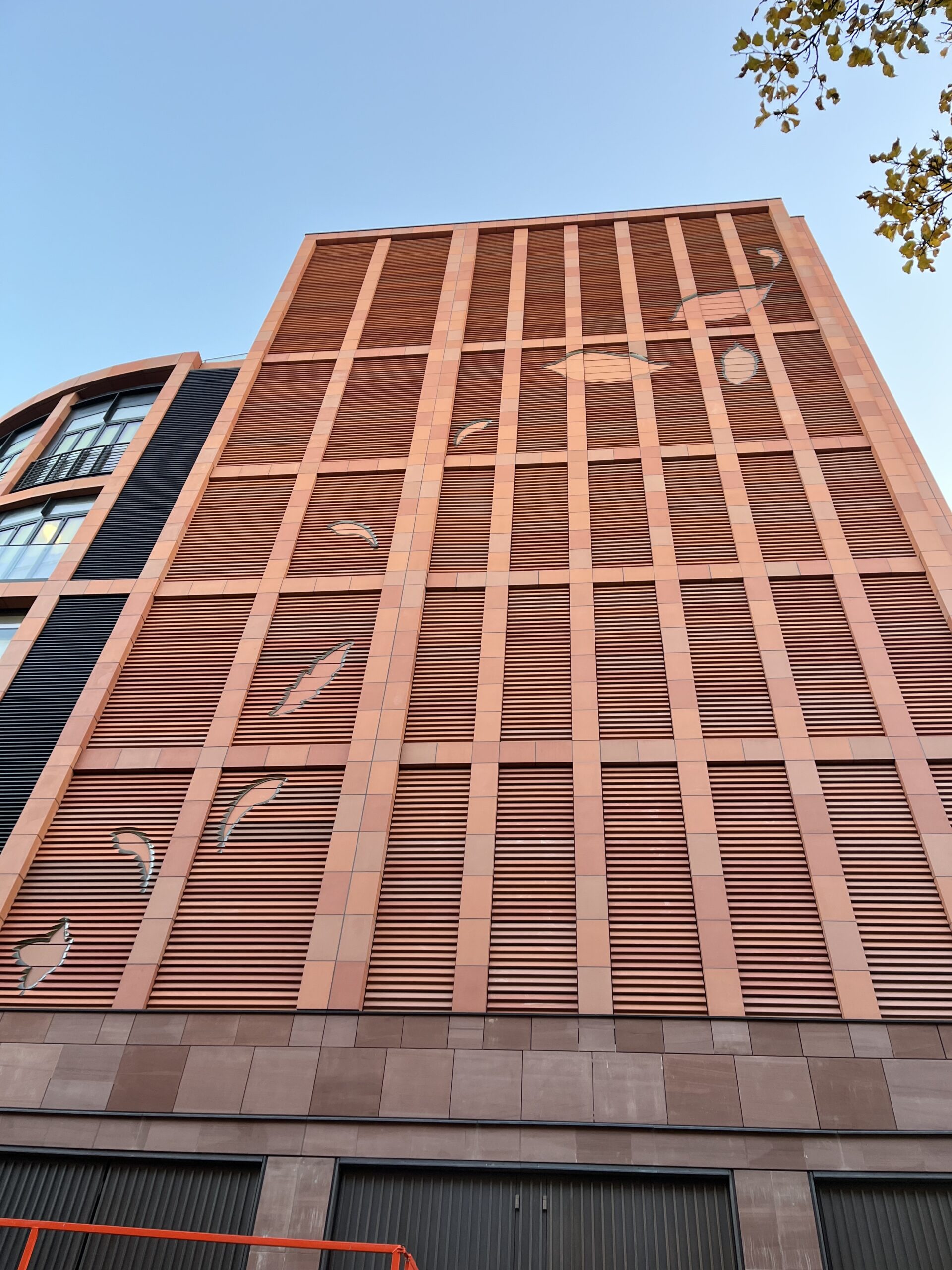
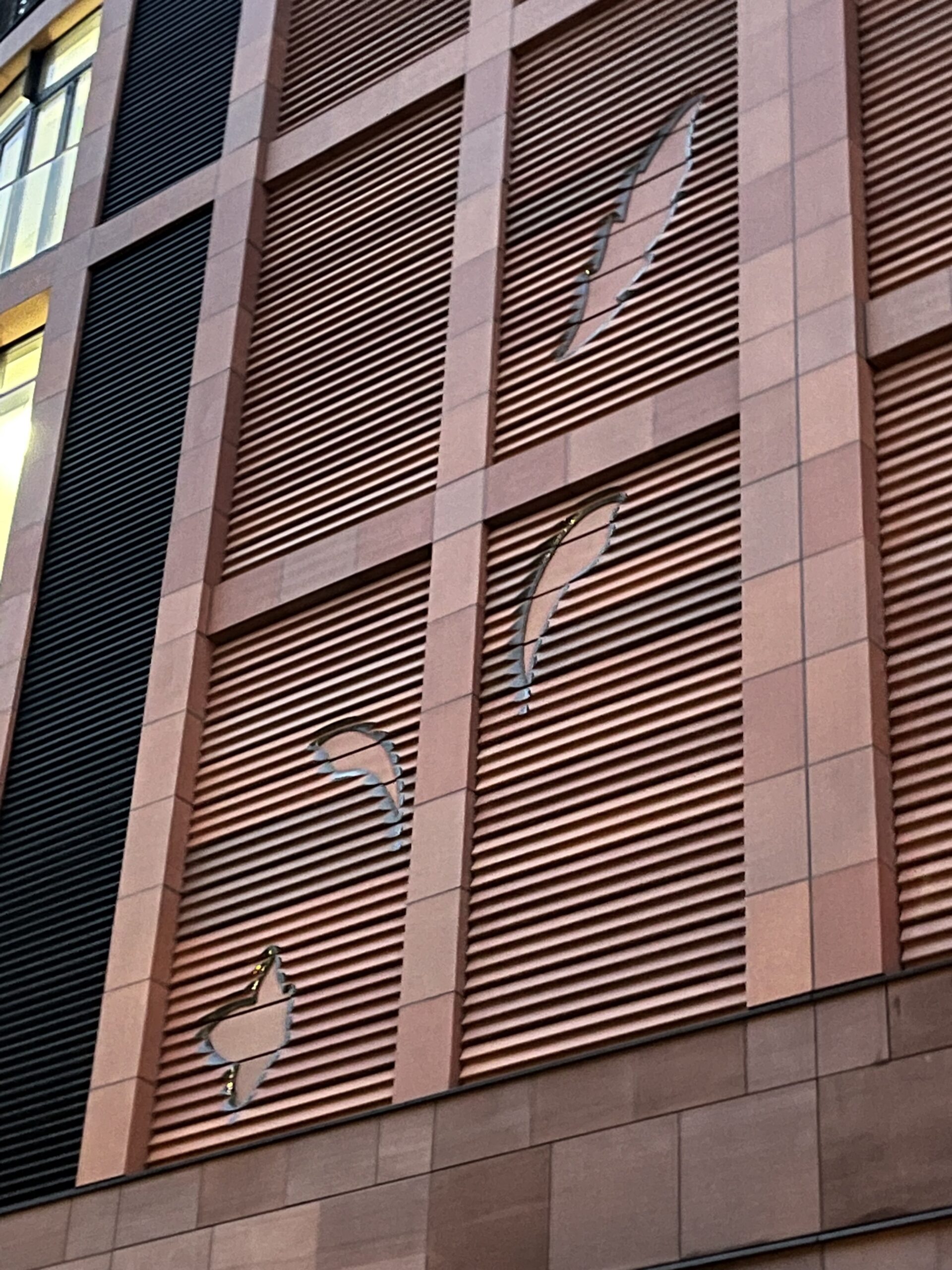
Kate Malone’s crystalline glaze façade at 24 Savile Row is a striking example of how ceramic expertise can transform the built environment with a touch of savoir-faire. Adorned with 10,000 hand-glazed tiles, this building boasts a beautifully handcrafted quality that is both modern and sympathetic to the architectural details of the surrounding Victorian structures
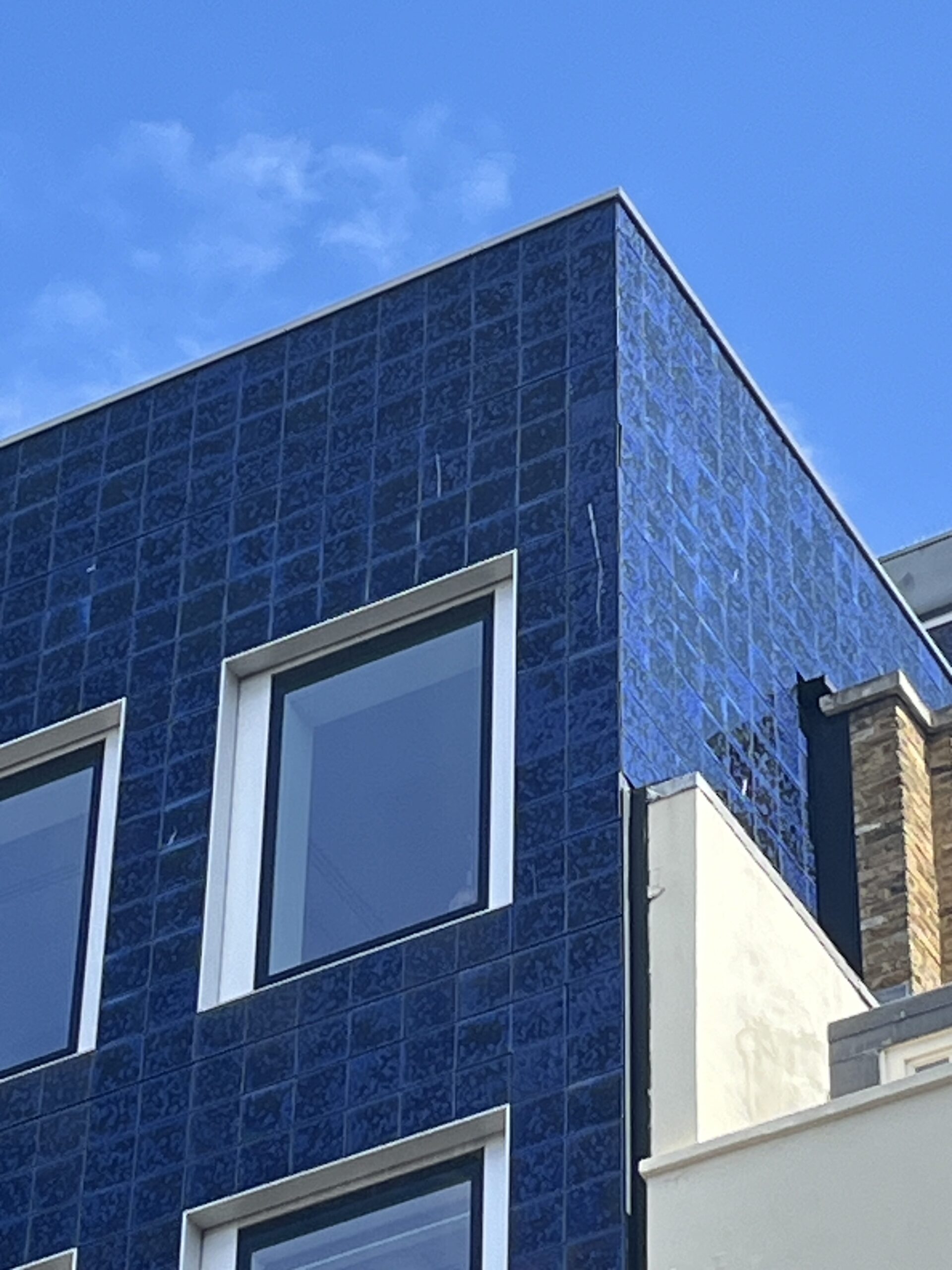
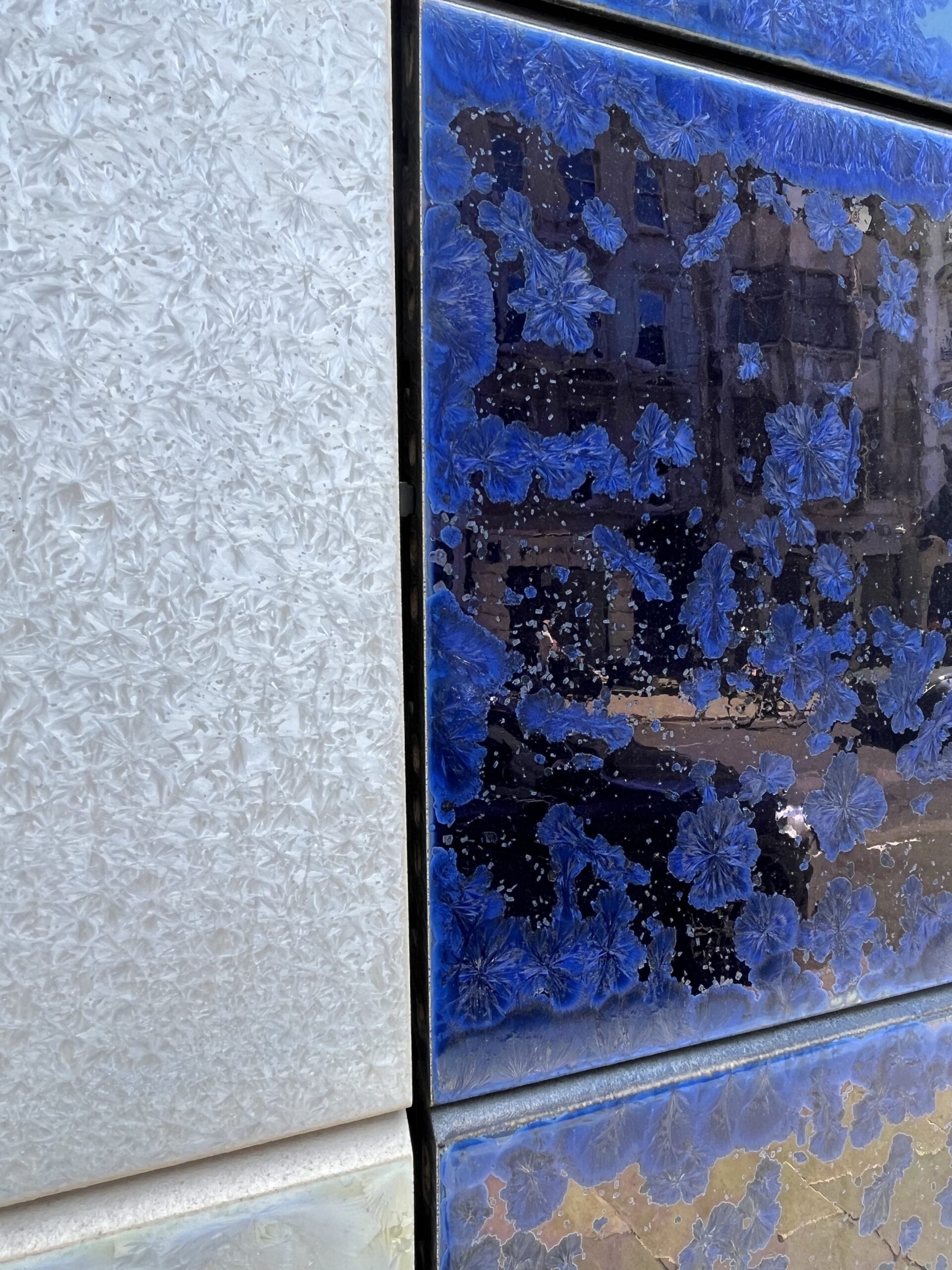
THE BLUE PLAQUE
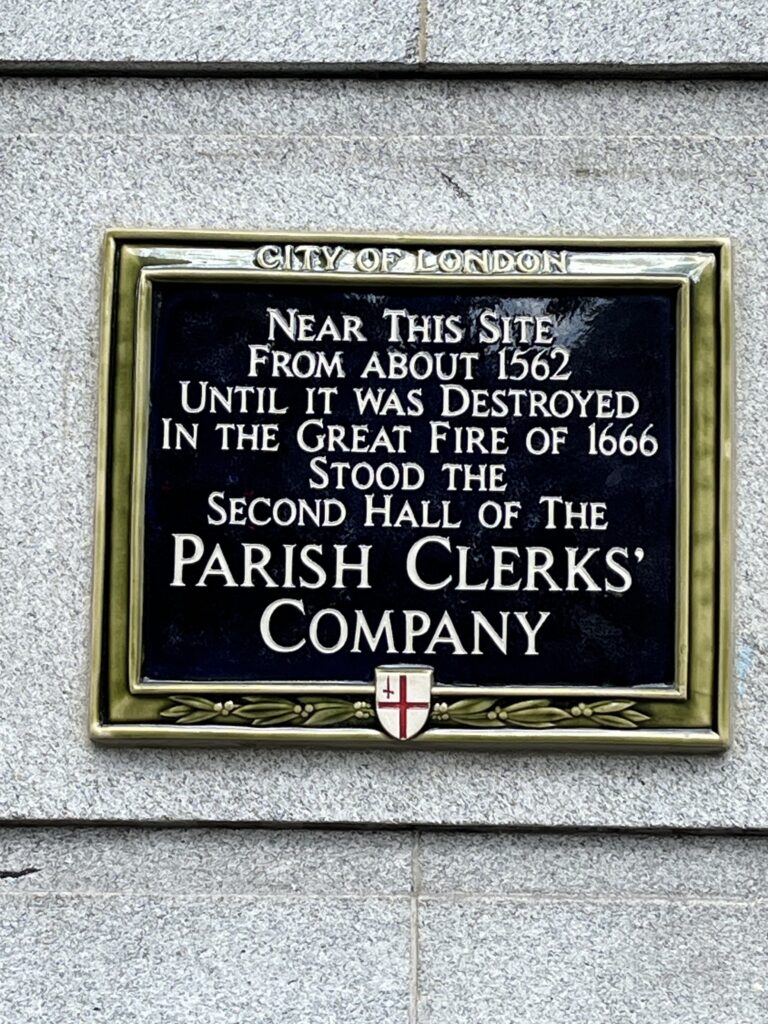
Hidden in plain sight, usually above doors and between first and second floor windows, is the seemingly innocuous yet incredibly significant Blue Plaque. These plaques commemorate the living history of the city through the individuals who resided here. Originally, they were encaustic tiles crafted by Milton Hollins & Co. dating back to 1866, later replaced by Royal Doulton stoneware tiles in the 1920s.
The selection of luminaries to represent London’s vibrant culture has been undertaken by various groups, councils, and committees over time. The format of the plaques has often changed, from ornate to austere, and in colors ranging from blue to brown and green. If we can move beyond version control, we can celebrate the ubiquitous and poignant tile as an exceptional piece of functional architecture, representing what makes London one of the most important cities in the world.
There are literally hundreds to find. Look up!
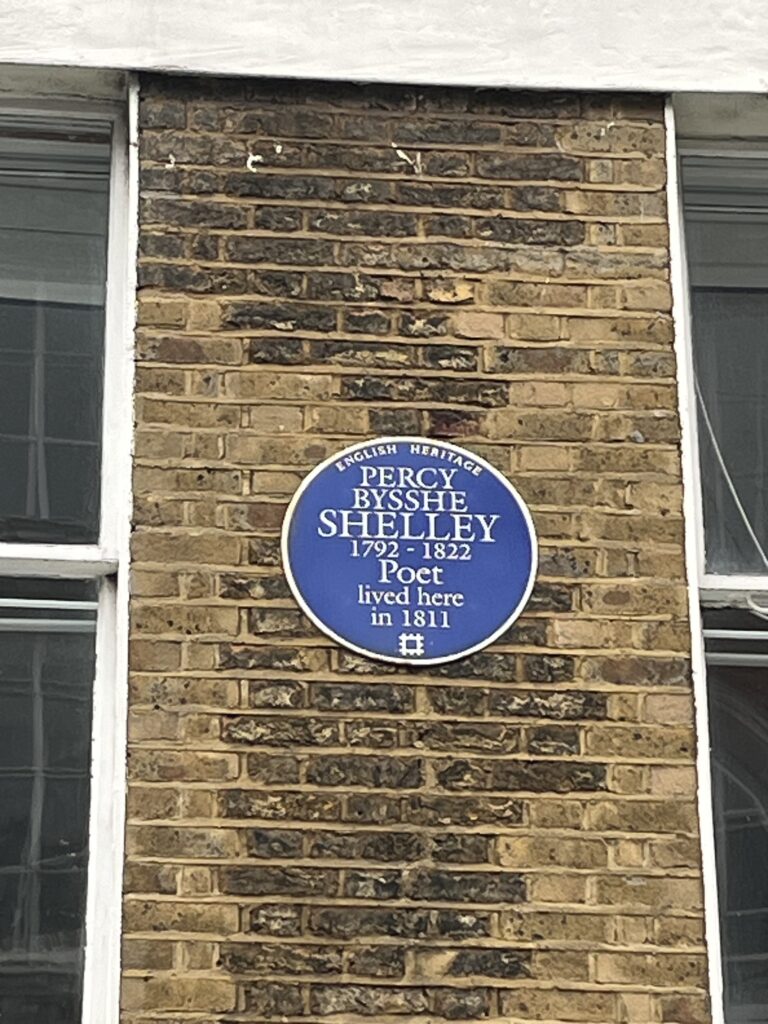
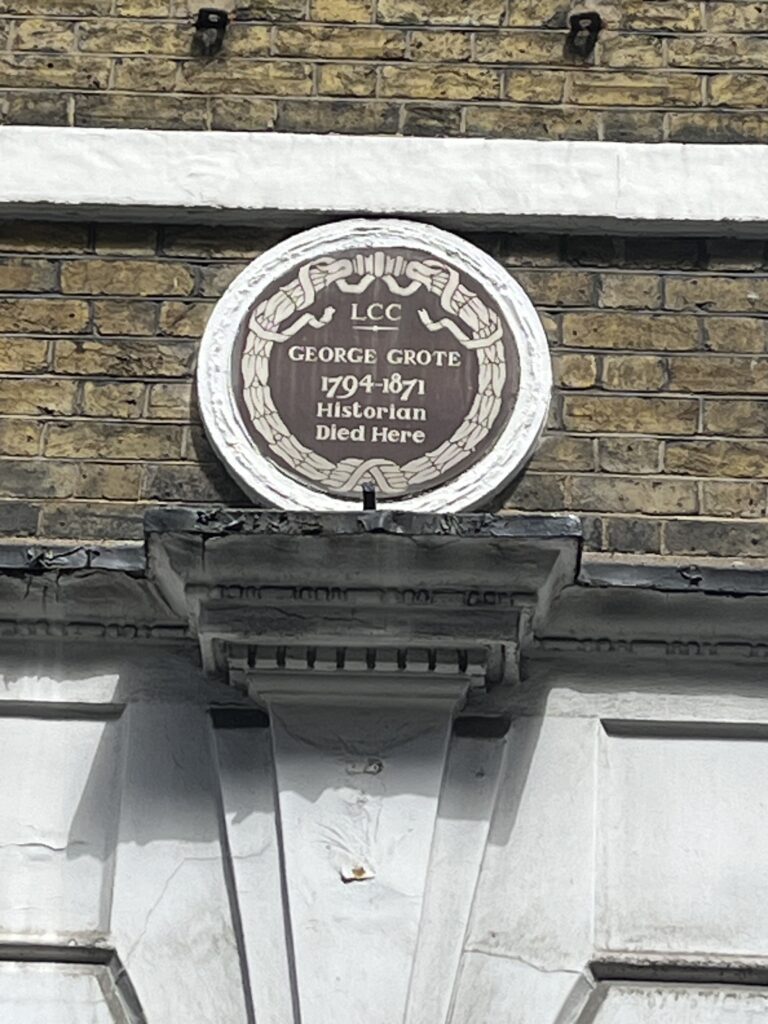
7 PM: PERFORMANCE AT BARBICAN
The Barbican is a dynamic arts, learning, and conference center. Showcasing global art that pushes boundaries, it hosts thousands of performances, events, and exhibitions annually, entertaining and inspiring millions. Arrive early to explore the current exhibition on the ground floor or head upstairs to the bar for a cocktail. Be sure to reserve tickets before your visit.
9 PM: DINNER
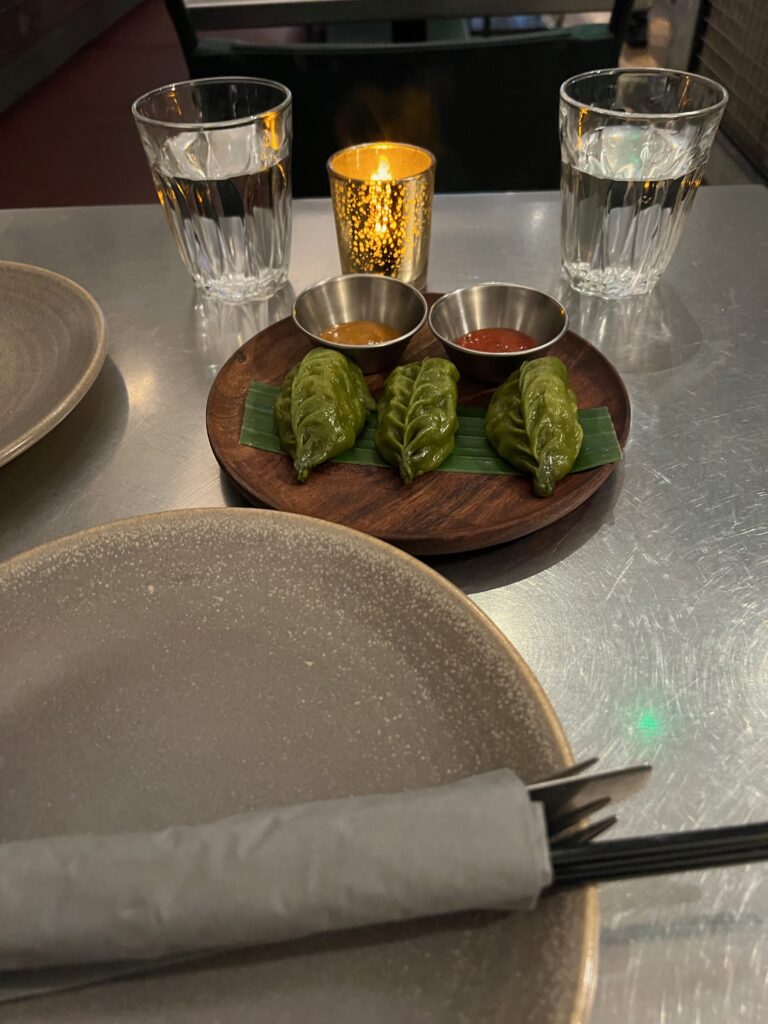
The Delaunay at the Aldwych is a grand dining room inspired by European elegance, popular with celebrities and media types. The menu is simple and high-quality, complemented by fuss-free, elegant service. Situated on the edge of the Theatre District, The Delaunay is well worth a visit if comedies, whodunits, or musicals are your thing.
Chinatown, just behind Leicester Square, is always worth a visit, offering a vibrant throng of restaurants and supermarkets.
For a more serious musical experience, Ronnie Scott’s is the place to be. This Soho legend is a reverential church to jazz, where visitors dine and drink cocktails while enjoying performances.

David Jones is a clay artist and writer with a PhD from Manchester Metropolitan University (2016) and a BA in Philosophy and Literature from Warwick University. His research focuses on the persistence of handmade art in the AI era, inspired by a residency at the EKWC in the Netherlands. Over the past year, he has presented at conferences in Bangkok, Delhi, and Richmond, USA. He serves on the Governing Council of the International Academy of Ceramics, representing the UK, Ireland, and Benelux, and is a Fellow of the Crafts Potters Association of the UK. Jones taught ceramics for thirty years at the University of Wolverhampton and authored books "Raku" and "Investigations into Fire." www.davidjonesceramics.com
Anthony Quinn focuses on preserving and sharing ceramic knowledge, highlighted by the Erasmus Strategic Partnership CRAFT and the Decoding Ceramics platform. He is Reader in Ceramic Design and Head of Ceramics Department at Central Saint Martins Art School in London. He coordinated the Crafts Council's Firing Up program, reintroducing ceramics to schools, and authored "The Ceramic Design Course" and "The Workshop Guide to Ceramics." Collaborating with Horizon Digital Economy Research Institute on Artcodes, he enhances human-computer interaction. His projects, including Design Transforms Borders and the Tall Tales project in Norway, emphasize craft, skill, and community-based knowledge sharing.
DECODING CERAMICS

